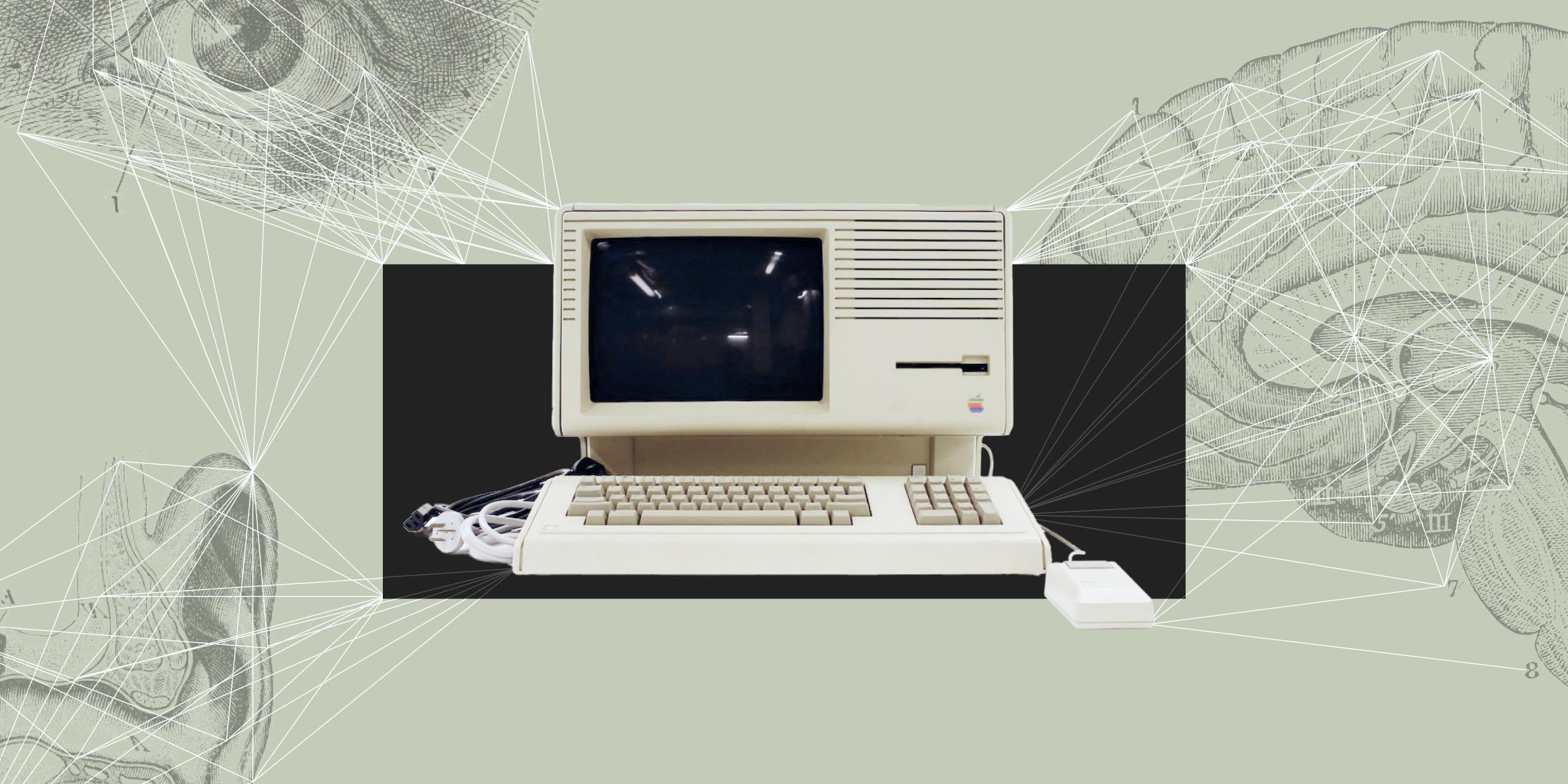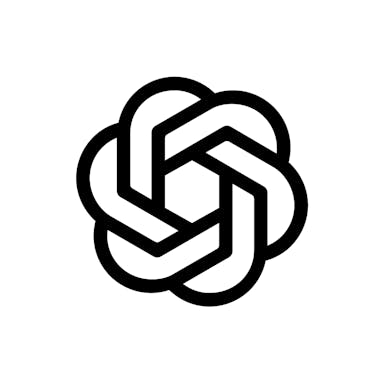Thesis
With the rise of generative AI, individuals and enterprises alike are pushing the boundaries of what AI systems can achieve. AI has evolved from unimodal point solutions that passively respond to human queries to complex, multimodal platforms that actively process and make decisions based on vast streams of information in real time. The increasing complexity and speed of information processing, along with the demand for more personalized and intuitive experiences, are driving this shift in human-machine interaction.
The broader AI market is experiencing significant growth, with generative AI projected by Bloomberg in 2023 to reach a market size of $1.3 trillion by 2030 at a CAGR of 42%. This expansion is driven by widespread adoption across industries, focusing on areas like customer operations, marketing and sales, software engineering, and research and development.
xAI is positioning itself to capitalize on these opportunities by enhancing human-machine interactions. By offering an open-source AI model called Grok that is intended to deliver accurate real-time responses, xAI addresses the needs of businesses and consumers seeking efficient, accurate, and transparent foundational model solutions. The integration of proprietary data and compute from X provides xAI with a unique advantage, enabling Grok to learn from a sizable and dynamic user-generated dataset inaccessible to other AI developers.
Founding Story

Source: X
xAI was founded by Elon Musk in July 2023. Musk, known for his roles as CEO of Tesla and SpaceX, co-founder of Neuralink, the Boring Company, and OpenAI, and his acquisition of Twitter, now X, established xAI with the ambitious goal to “understand the true nature of the universe.”
Musk's interest in artificial intelligence dates back to his involvement with OpenAI, which he co-founded in 2015. However, he left OpenAI's board in 2018 due to potential conflicts with Tesla's AI development and differing visions for the future of AI. Musk has been vocal about his concerns regarding AI safety and the need for responsible development, often highlighting the potential existential risks associated with uncontrolled and exponentially self-improving AI advancement.
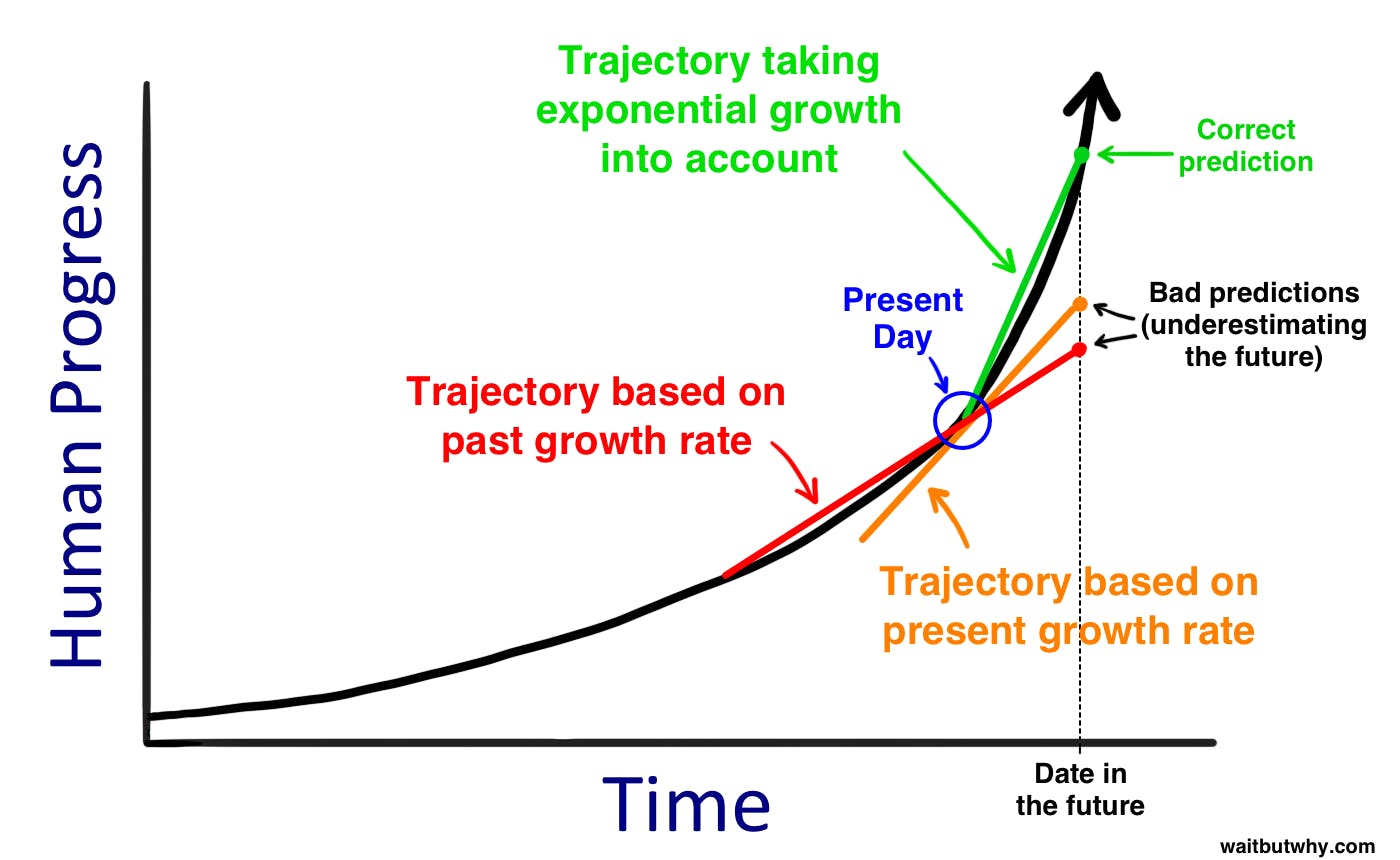
Source: Wait But Why
xAI has said its mission is to build an AI that is “maximally truth-seeking” and focused on understanding the universe at a fundamental level. To do so, xAI is creating an alternative to existing AI models by emphasizing transparency, safety, and alignment with human values. xAI operates with close ties to Musk's other ventures. For instance, it leverages X and Tesla for proprietary datasets and computing resources.
xAI's launch came amid a rapidly evolving AI landscape, with companies such as OpenAI, Anthropic, Google, and Meta competing to provide generative AI models. Aiming to create a team with high talent density and AI domain expertise, Musk co-founded xAI along with the following key founding members:
Igor Babuschkin: Previously a senior research engineer at DeepMind and OpenAI, Babuschkin specializes in machine learning and reinforcement learning. He joined xAI to lead the development of advanced AI models.
Tony Wu: An AI researcher with a Ph.D. from the University of Toronto, Wu worked at Google DeepMind focusing on natural language processing and reasoning. At xAI, he contributes to the development of language models that can comprehend complex concepts.
Greg Yang: Previously having worked at Microsoft Research, Yang's work at xAI focuses on AI theory and mathematics. His research aids xAI in developing robust and scalable AI systems.
Jimmy Ba: An assistant professor at the University of Toronto and co-author of the Adam optimization algorithm, Ba advises xAI on machine learning techniques.
Christian Szegedy: A former research scientist at Google Research, Szegedy is known for his work on computer vision and deep learning. He brings expertise in neural network architectures to the xAI team. He departed the xAI team in February 2025.
Product
Grok
Grok is xAI’s flagship large language model, envisioned as a witty, “rebellious” AI assistant with real-time knowledge from X. First launched in November 2023, Grok has undergone rapid iterations to boost its reasoning, speed, and features. Below is a timeline of Grok models and their improvements over time:
Grok-1
The initial Grok model was built quite fast (reportedly in just four months) and debuted as an X-exclusive chatbot for paid users in November 2023. It was designed to answer questions with humor and fewer safeguards than its rivals – including “spicy” queries other AI might refuse. Grok-1 already had real-time access to X’s data, giving it up-to-date knowledge of current events, which xAI touted as a unique advantage. Despite rapid development, xAI claimed that Grok was on par and even “surpassed” other models However, the model’s unfiltered style also meant that Grok courted early controversies, where the model would share incorrect or potentially dangerous information.
Grok-1.5
xAI’s first major upgrade focused on boosting reasoning and context handling. Grok-1.5, released in March 2024, expanded the model’s context window to 128K tokens, allowing it to ingest and analyze extremely long documents (up to 128K tokens, 16x the previous limit). Its problem-solving skills improved significantly; for example, Grok-1.5 scored 50.6% on the MATH benchmark (versus 23.9% for Grok-1) and 90% on GSM8K, reflecting much better performance on math word problems. Coding abilities also jumped, with Grok-1.5 achieving 74.1% on HumanEval code generation (up from 63.2% in Grok-1).
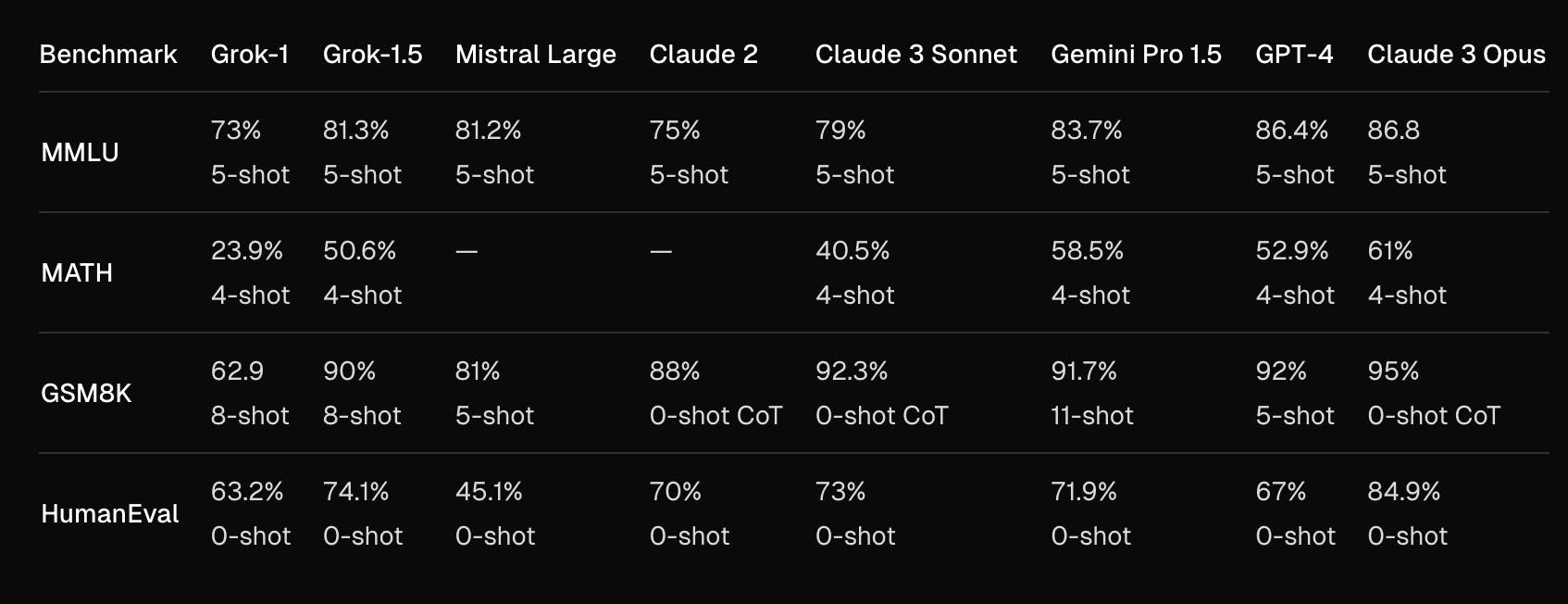
Source: xAI
These gains narrowed the gap with top models – for instance, Grok-1.5 reached 81.3% on the MMLU knowledge benchmark, approaching GPT-4’s approximately 86% on that test. Around this time, xAI also released Grok-1’s model weights publicly, signaling a company move towards AI transparency and inviting community feedback.
Grok-2 & Grok-2 Mini
Introduced in August 2024, Grok-2 brought “significant improvements” in reasoning, accuracy, and versatility over its predecessor. xAI noted that Grok-2 could identify missing information in a prompt and reason through event sequences more effectively. Internal tests showed it outperformed OpenAI’s GPT-4 and Anthropic’s Claude on some benchmarks. Grok-2 retained a high degree of instruction-following and added multilingual support, answering in multiple languages with greater accuracy. Upon launch, the full Grok-2 model was accessible only to X Premium subscribers (for $8/month).
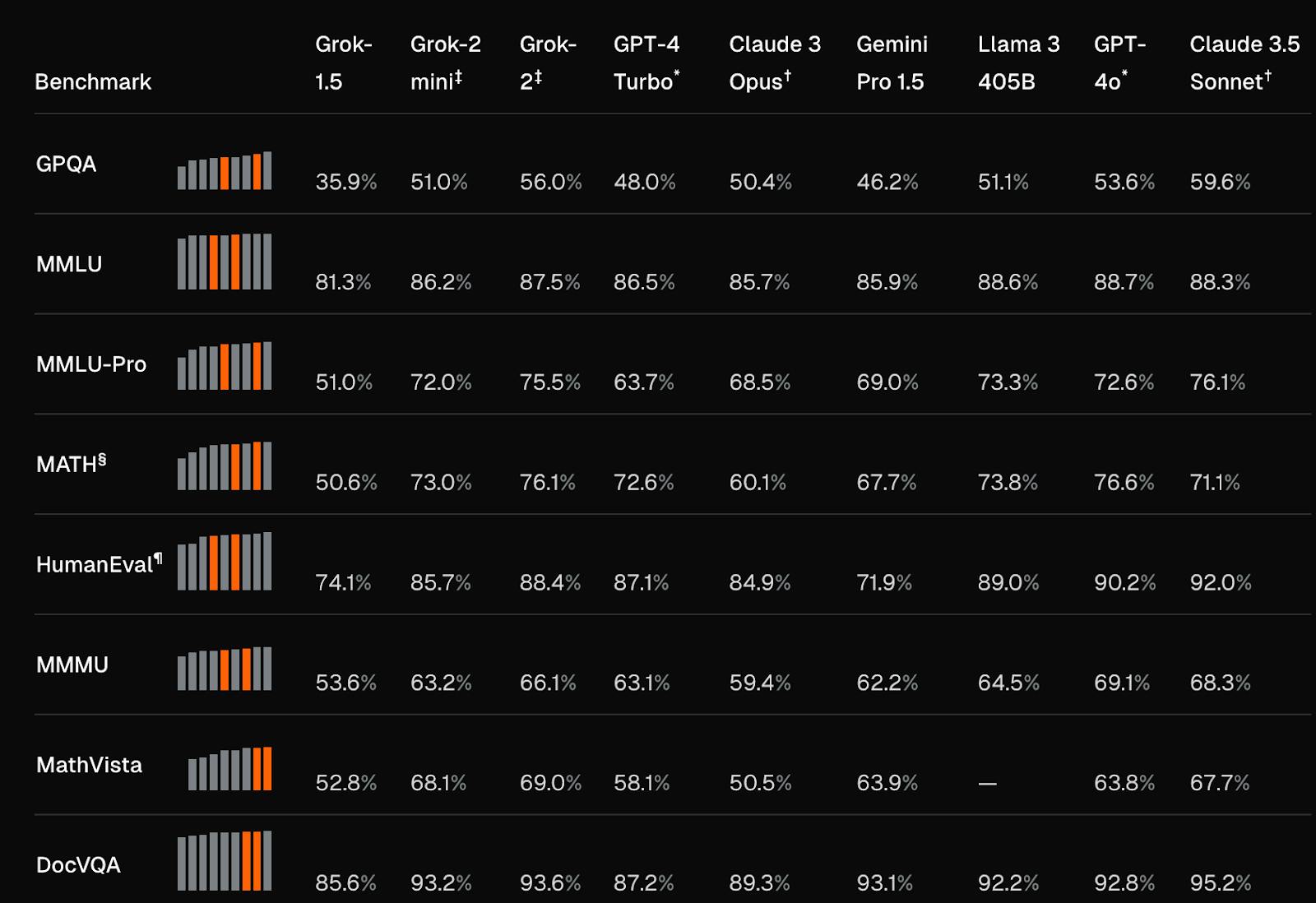
Source: xAI
Alongside the full model, xAI released a distilled Grok-2 Mini, a smaller LLM optimized for speed and cost-efficiency. The Mini model was offered as an option in X’s interface, letting users trade off output richness for faster responses. By the end of August, xAI also made Grok-2 (and Mini) available via its enterprise API, giving developers a cheaper, more efficient model choice for integration.
Bringing Grok to Everyone
In December 2024, an upgraded Grok-2 model was rolled out platform-wide, with improved response speed, better accuracy, and multilingual understanding. Notably, Grok gained the ability to perform live web searches and cite sources in its answers. When asked about current news or factual queries, Grok could retrieve relevant posts from X or webpages on the internet and display them with inline citations, a move aimed at improving answer reliability and user trust for both X and Grok. xAI also integrated image generation into Grok at this time via the Aurora model, enabling users to ask Grok for pictures or memes.
xAI also opened Grok access to all X users for free (ad-supported), albeit with rate limits (for example, 10 queries every 2 hours). Paying subscribers on X (Premium and Premium+) received higher usage caps and early access to new capabilities. Additionally, a new “Grok button” began appearing on X posts, allowing users to click and have Grok analyze or explain a tweet in context.
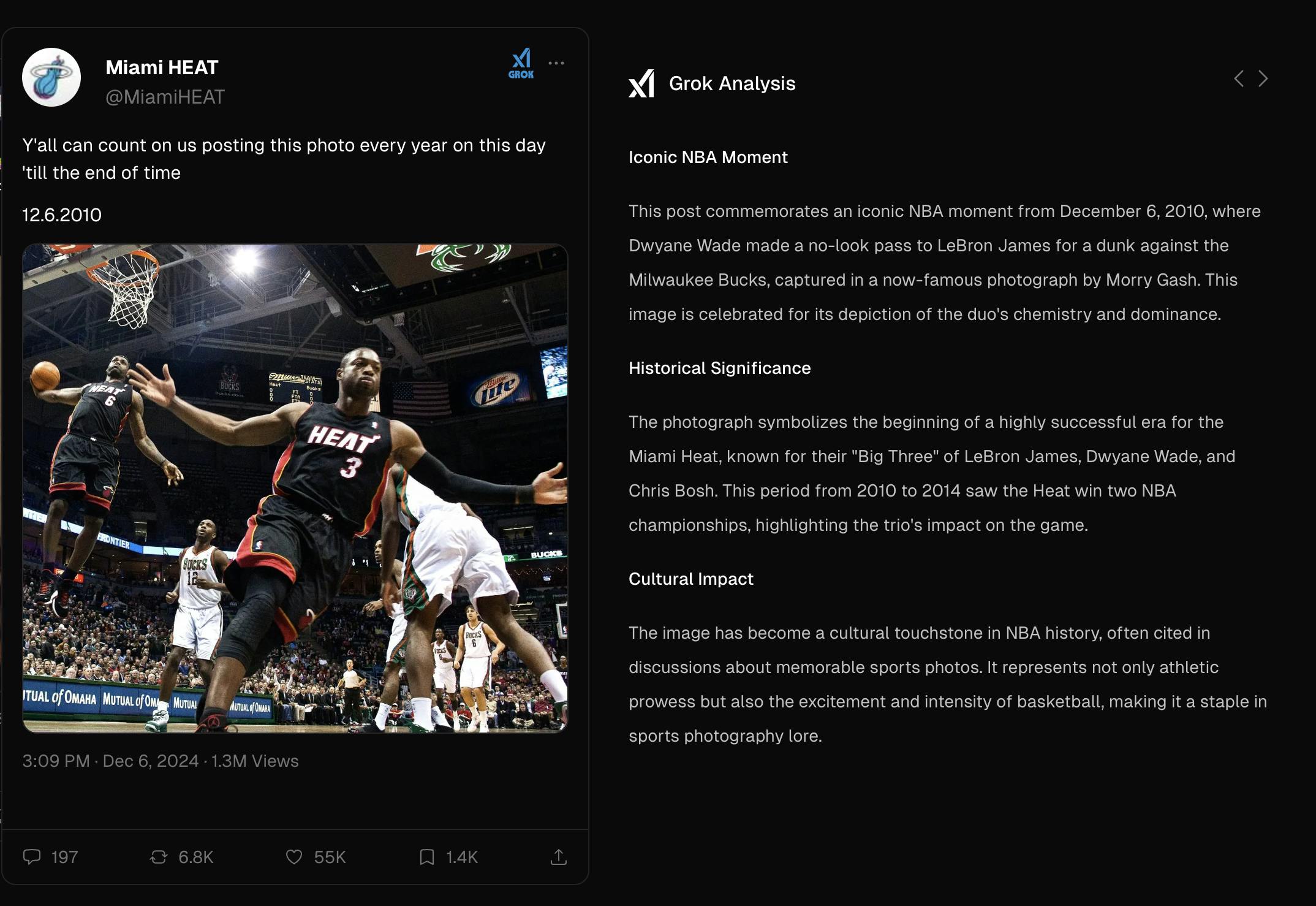
Source: xAI
Grok 3 Beta & Grok 3 Mini
Unveiled as an early preview in February 2025, Grok 3 was trained on xAI’s compute cluster (Colossus), reportedly using “ten times” more compute than any prior state-of-the-art model. Grok 3 demonstrated markedly better performance than prior Grok models in reasoning, mathematics, coding, world knowledge, and following complex instructions.
According to xAI, Grok 3 exhibits “leading performance across both academic benchmarks and real-world user preferences,” attaining an Elo score of 1406 (and top 1/2 in placements) on the Chatbot Arena ranking. Grok 3 also exhibits top performances across standard AI benchmarks, including graduate-level science knowledge (GPQA), general knowledge (MMLU-Pro), and math competition problems (AIME).
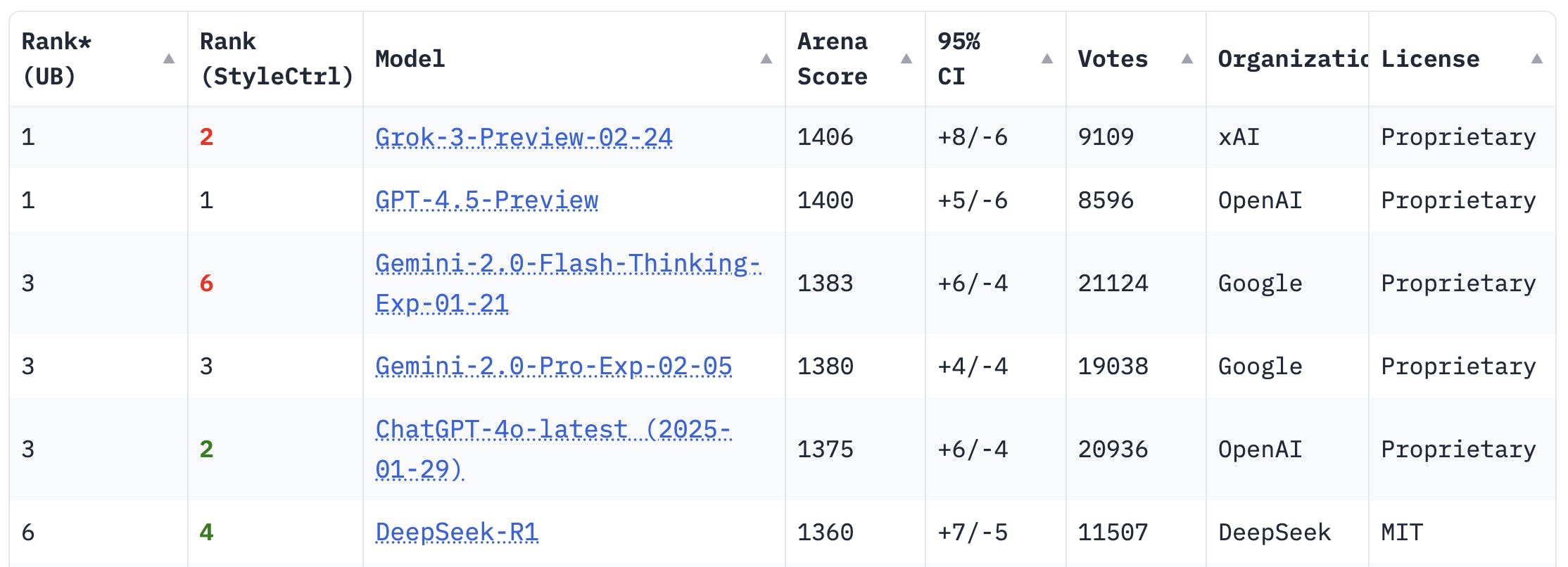
Source: Chatbot Arena
As of February 2025, Grok 3 was being rolled out to X’s Premium/Premium+ users and the Grok web/app clients, with Premium+ subscribers receiving immediate access to the heavy “Think” reasoning mode and a new “DeepSearch” feature. All users, including those on the free tier, are expected to receive access to Grok 3’s improved capabilities over time as xAI continues training and fine-tuning the model with user feedback during the beta. As of March 2025, Grok 3’s core features include the following:
Document Analysis & Summarization: Grok 3 enables users to extract key insights from lengthy documents, including articles, reports, and PDFs, by generating concise summaries. The system supports multiple file formats, from text documents and spreadsheets to images via built-in OCR, thereby streamlining the process of identifying actionable findings. This automated approach minimizes manual review, ensuring that critical details and trends are efficiently highlighted for informed decision-making.
Coding Assistant: Grok 3 functions as an effective coding partner by generating code in languages such as Python, JavaScript, and C++, and providing step-by-step explanations for programming challenges. The tool assists in debugging, writing functions, and crafting complete applications without the need for an integrated compiler or debugger. This results in faster development cycles and reduced manual intervention, ultimately saving significant time for developers.
Multimodal Vision: With multimodal vision capability, Grok 3 can analyze and interpret images alongside text. The feature supports object identification, text extraction via OCR, and detailed visual content analysis, making it suitable for tasks such as verifying image authenticity or extracting data from graphics. This integration of visual and textual analysis enables a seamless and comprehensive review of mixed media content within a single interface.

Source: xAI
Voice Mode: The introduction of Voice Mode in Grok 3 allows for natural, spoken interactions, converting speech to text and synthesizing lifelike audio responses. This feature facilitates hands-free operation, making it particularly useful for mobile environments and users who prefer verbal communication. By enabling direct voice interaction, Grok 3 further enhances user accessibility and provides a more intuitive conversational experience.

Source: xAI
DeepSearch: DeepSearch is xAI’s search engine embedded in Grok 3. When activated, it dispatches a virtual research agent that scours the internet (and X) in real time to gather information, then synthesizes a detailed report or “abstract” answering the user’s query. This feature is designed to answer complex questions requiring up-to-date information or multi-step investigation for use cases such as compiling market research or comparing recent events. DeepSearch automatically breaks down queries into sub-tasks, performs multiple web searches, and compiles findings with source citations for transparency. External reviewers note that DeepSearch is similar to the “deep research” modes of ChatGPT or Perplexity, providing similar thorough, reference-backed answers for users.
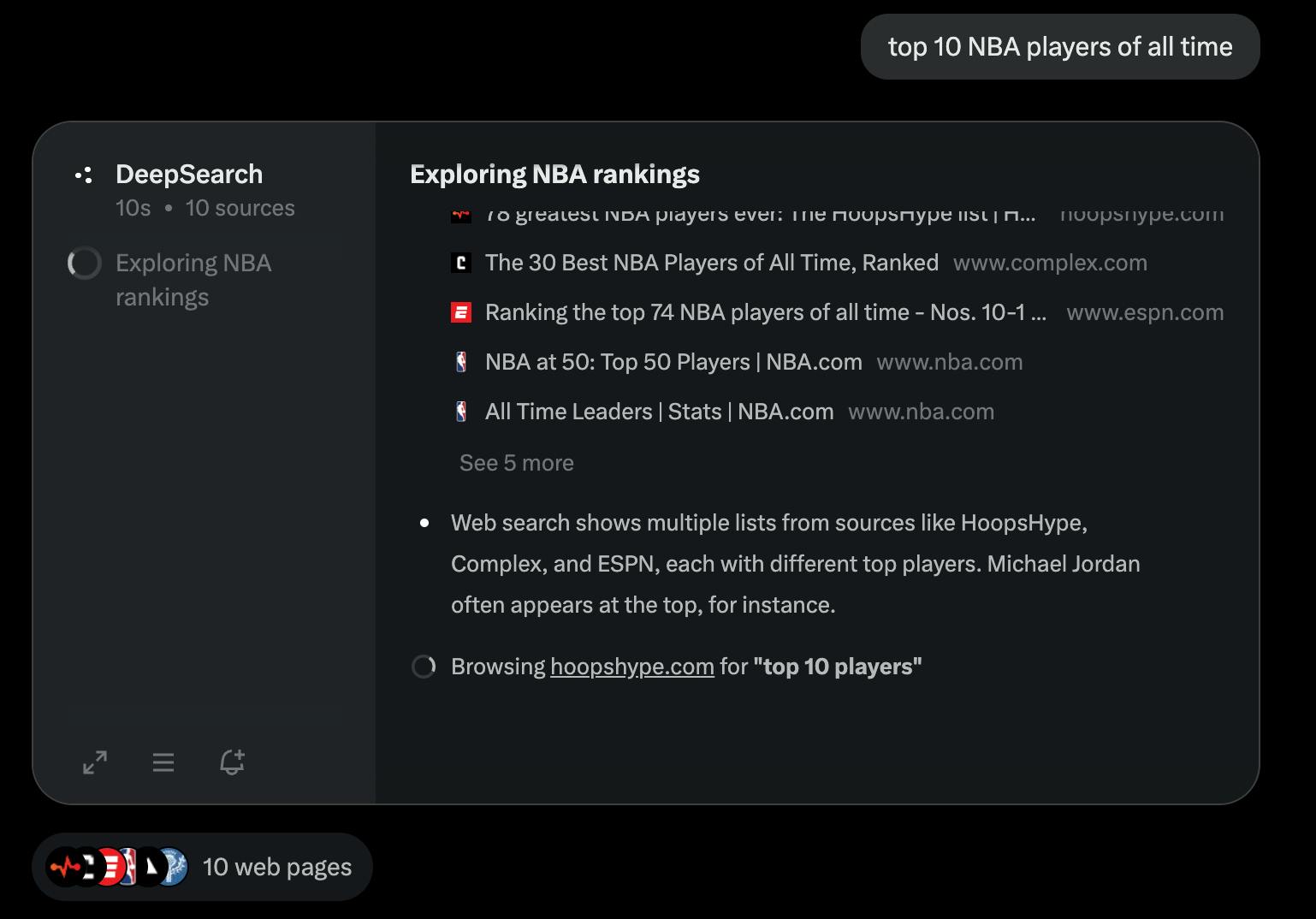
Source: Grok
Think: Think is an advanced reasoning mode that lets Grok 3 logic through problems in a transparent, multi-step way. When a user presses the “Think” button, Grok engages its reasoning model to tackle difficult queries (math problems, logic puzzles, complex coding tasks, etc.) by breaking them into smaller steps and iteratively working through each. Think Mode displays the AI’s chain of thought so the user can watch Grok’s reasoning process in real time. This level of transparency was not present in earlier Grok models. It offers an “open” view of the AI, which is valuable for understanding how an answer was derived and for education or auditing purposes. In practice, this feature allows users to solve complex equations or debug code while seeing each interim logic step. Grok 3 Think is notably more accurate and stronger at solving complex reasoning queries than the default model.

Source: xAI
Aurora
Aurora is xAI’s in-house text-to-image generative model that powers Grok’s ability to create pictures. Released in December 2024, Aurora represents xAI’s answer to other leading image generation models. Technically, Aurora is an autoregressive mixture-of-experts model trained on interleaved text and image data. This means the model treats image generation as a sequence prediction problem. Given a text prompt (and optionally an input image), it generates the next “tokens” step-by-step, where tokens represent parts of an image. Trained on billions of examples from the internet, Aurora has developed a broad understanding of how visual concepts correspond to language. Aurora allows users to convert text prompts into AI-generated images and multimedia outputs. Premium users benefit from enhanced creative capabilities, including the generation of artwork, logos, and prototype video clips. This expanded functionality supports a range of applications from graphic design to media production, delivering high-quality content with minimal user input.

Source: xAI
X Integration
Elon Musk has tightly integrated Grok into the X platform as both a showcase and a testing ground. Initially, access to Grok was restricted to paid X subscribers, which limited the user base, but it also allowed xAI to iterate with a controlled group. Over the course of 2024, integration deepened as Grok became available via X’s mobile apps and website (through a chat interface at grok.com or an “Ask Grok” option on X). The introduction of the “Grok” button on tweets in late 2024 allowed users scrolling their feeds to ask Grok to contextualize or analyze a post (for example, summarizing a long thread, explaining a meme, or providing background on a news item).
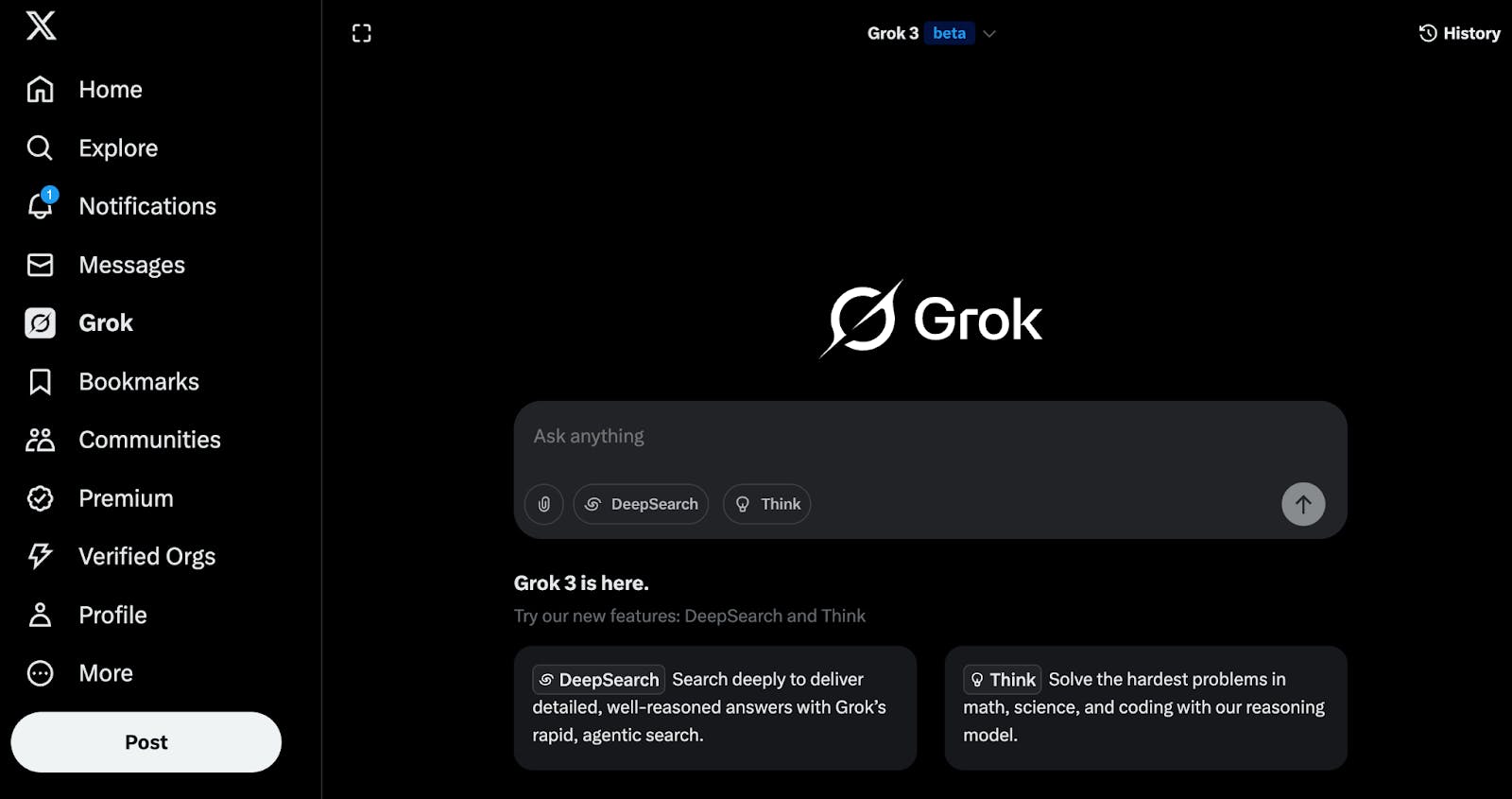
Source: X
Grok’s ability to pull real-time data from X gives Grok an edge in addressing questions about ongoing events. The model leverages recent X posts as well as external web content to produce answers to queries about past and current events. When queried, Grok will search the platform and the web, then respond with answers that include linked citations to sources like recent news articles or viral posts.
xAI API
In November 2024, xAI launched a public beta of its developer API, allowing third parties to build applications on top of Grok and related models. xAI explicitly made its REST API compatible with existing SDKs so that migrating an app to use Grok from rival model developers OpenAI and Anthropic is as simple as swapping out the API endpoint URL. This compatibility lowers the barrier for developers who may want to test Grok as an alternative AI backend.
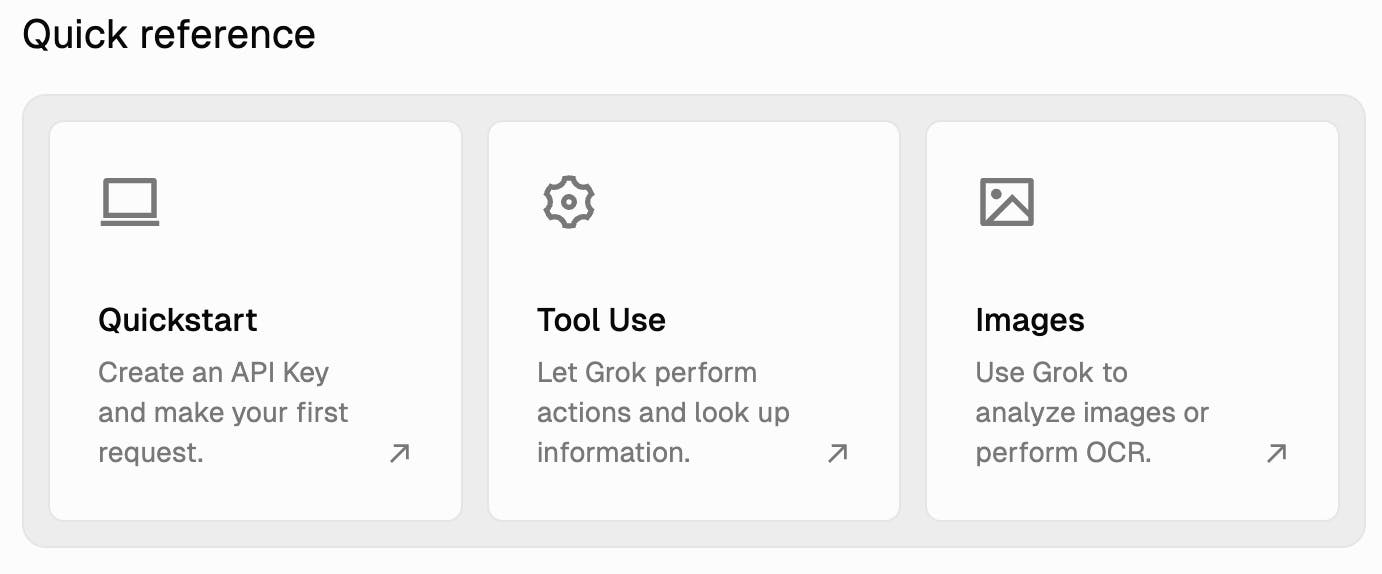
Source: xAI
The API supports features like function calling, system messages for role instructions, and extended context processing for applications needing long documents. xAI announced that Grok 3 and Grok 3 Mini would be made available via API by Q1 2025, including both standard and “think” (reasoning-optimized) modes. Enterprise clients will also gain access to DeepSearch through the API. Developer feedback indicates Grok’s high steerability as a double-edged sword: great flexibility, but requiring developers to implement their own safety filters. Looking forward, xAI’s API roadmap includes adding Grok 3 access, code execution, and agentic capabilities (letting Grok run tools or scripts on behalf of the user).
Colossus
Colossus is xAI’s high-powered computing cluster, purpose-built to train and run advanced AI models. xAI claims that Colossus is “the world’s biggest supercomputer.” The supercomputer was constructed by SuperMicro in 122 days in 2024. Jensen Huang, the CEO of Nvidia, explained how that compares to a typical supercomputer: “A supercomputer that you would build would take, normally, three years to plan, and then they deliver the equipment and it takes one year to get it all working.” Elon Musk has claimed that Colossus is “the most powerful AI training system yet.” By February 2025, xAI reached a scale of over 80K GPUs, with plans to reach 200K GPUs by late 2025, and retains an ultimate goal of 1 million GPUs by the end of 2025.
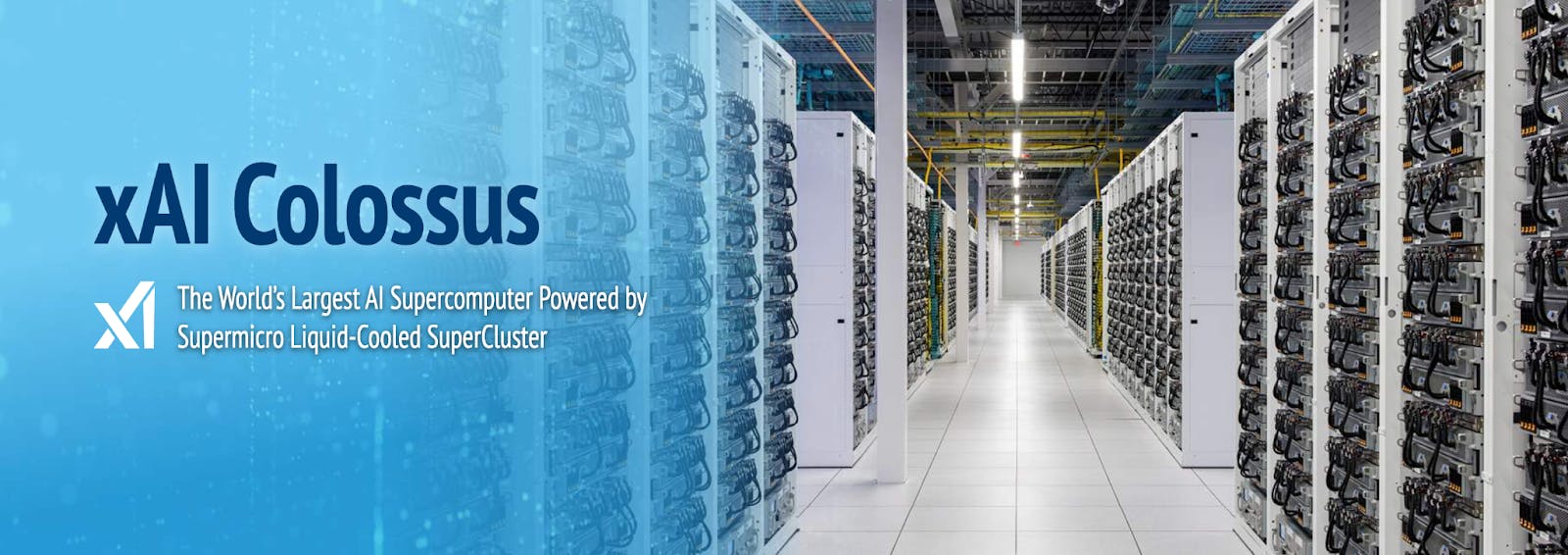
Source: Supermicro
While the exact hardware details are not fully disclosed, Colossus currently consists of NVIDIA’s AI accelerators (H200 / H100 GPUs) connected via the NVIDIA Spectrum-X Ethernet networking platform. Colossus is engineered for previously unprecedented throughput: with 200K GPUs, the cluster has an aggregate memory bandwidth of approximately 194 petabytes per second and >1 exabyte of storage capacity. Each server node is connected with 3.6 terabits per second of network bandwidth, designed to minimize bottlenecks and accelerate sizable distributed training.
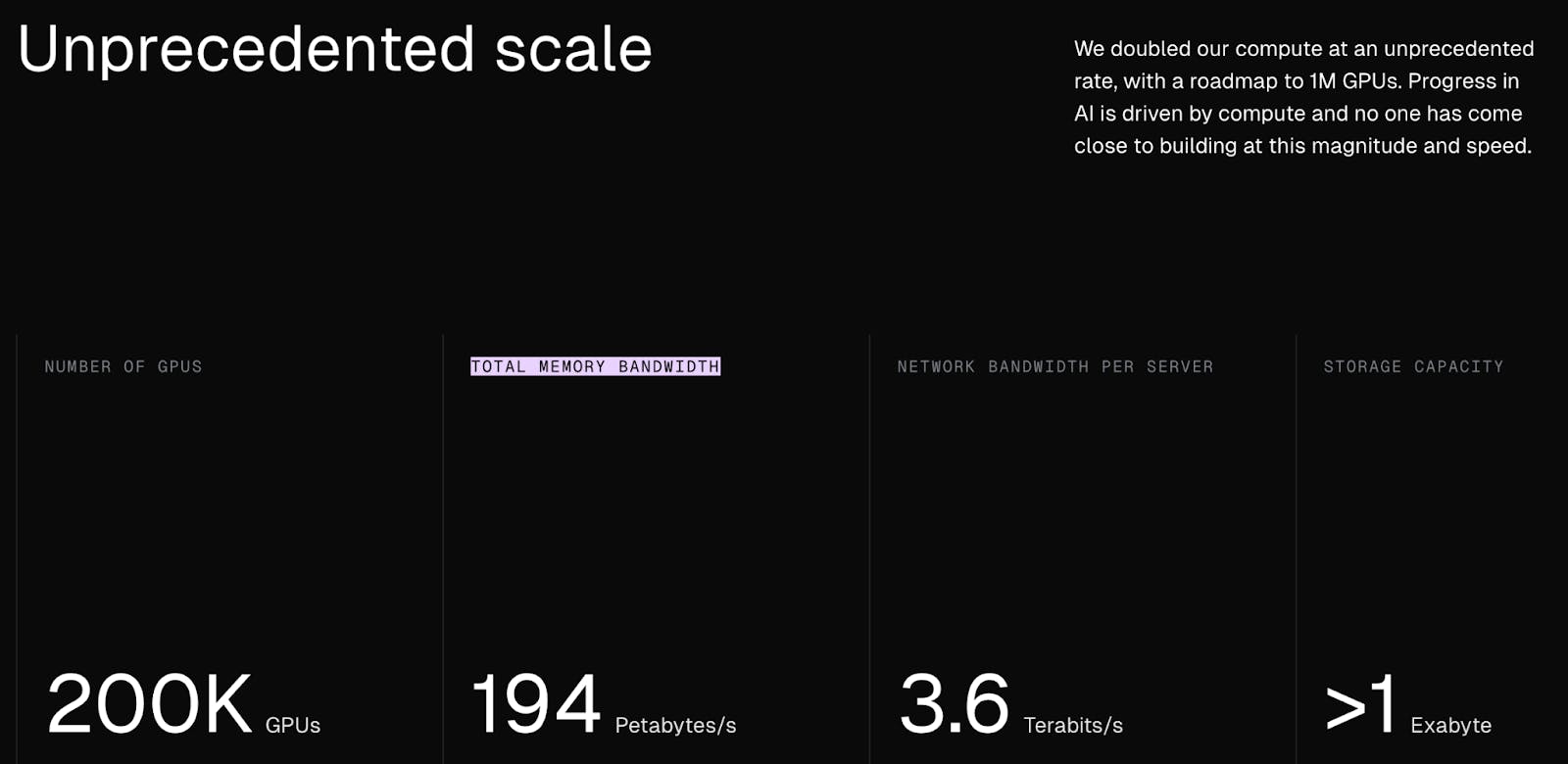
Source: xAI
When compared with other AI supercomputing efforts, such as the Microsoft/OpenAI Azure supercomputer (10K GPUs), Meta’s Research SuperCluster (16K GPUs), or the Nvidia Eos (10.5K, 4.5k GPUs) Colossus stands out due to its sheer scale. Estimates suggest that at the full planned scale, Colossus (200K H100 GPUs) could theoretically deliver around 800 exaFLOPs of AI compute, significantly outperforming current publicly known systems. In comparison, El Capitan, which surpassed Frontier as the world’s most powerful traditional supercomputer in November 2024, aims to peak at two exaFLOPs, meaning Colossus at full scale would surpass its compute 400x.
Precise estimates of AI infrastructure among top industry players can be difficult to ascertain, as publicly reported data on exact GPU counts and allocations vary significantly and often lack transparency. However, analysis of ballpark estimates for computing resources available at major firms gives the following year-end 2024 estimates and 2025 projections:
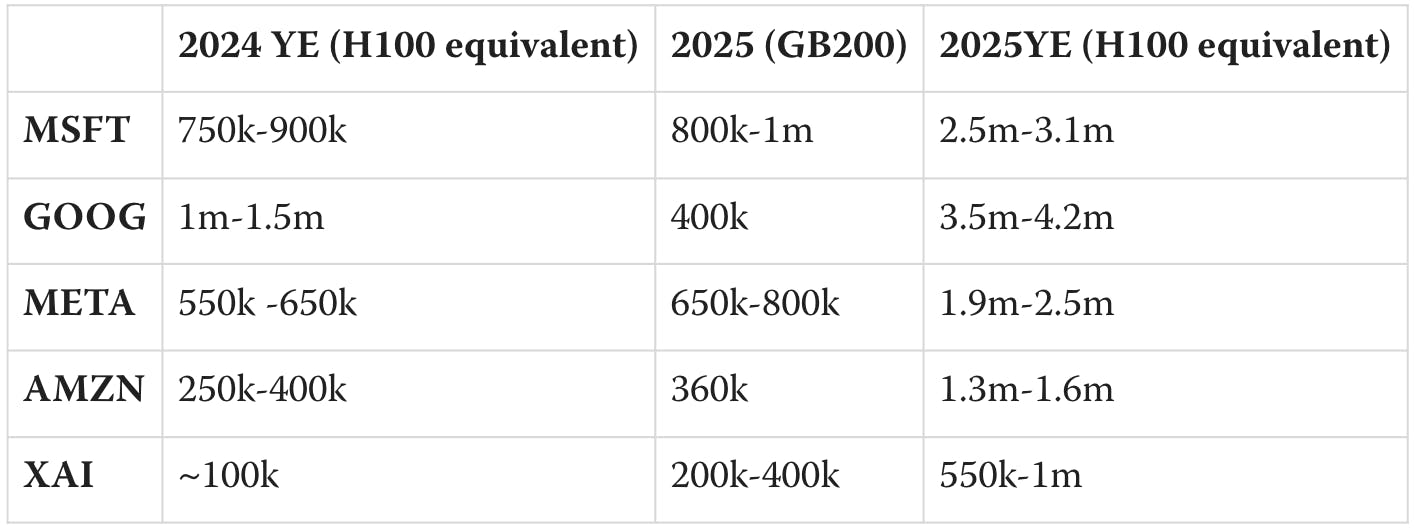
Source: LessWrong
Given estimates for past AI foundational model training, approximate compute differences between H100 and A100 GPUs, and scaling laws, one report notes that xAI’s AI infrastructure is positioned similarly to fellow foundational model startups, saying that “If xAI is able to devote a similar fraction of its compute to training as OpenAI or Anthropic… its training is likely to be similar in scale to Anthropic and somewhat below OpenAI and Google.”
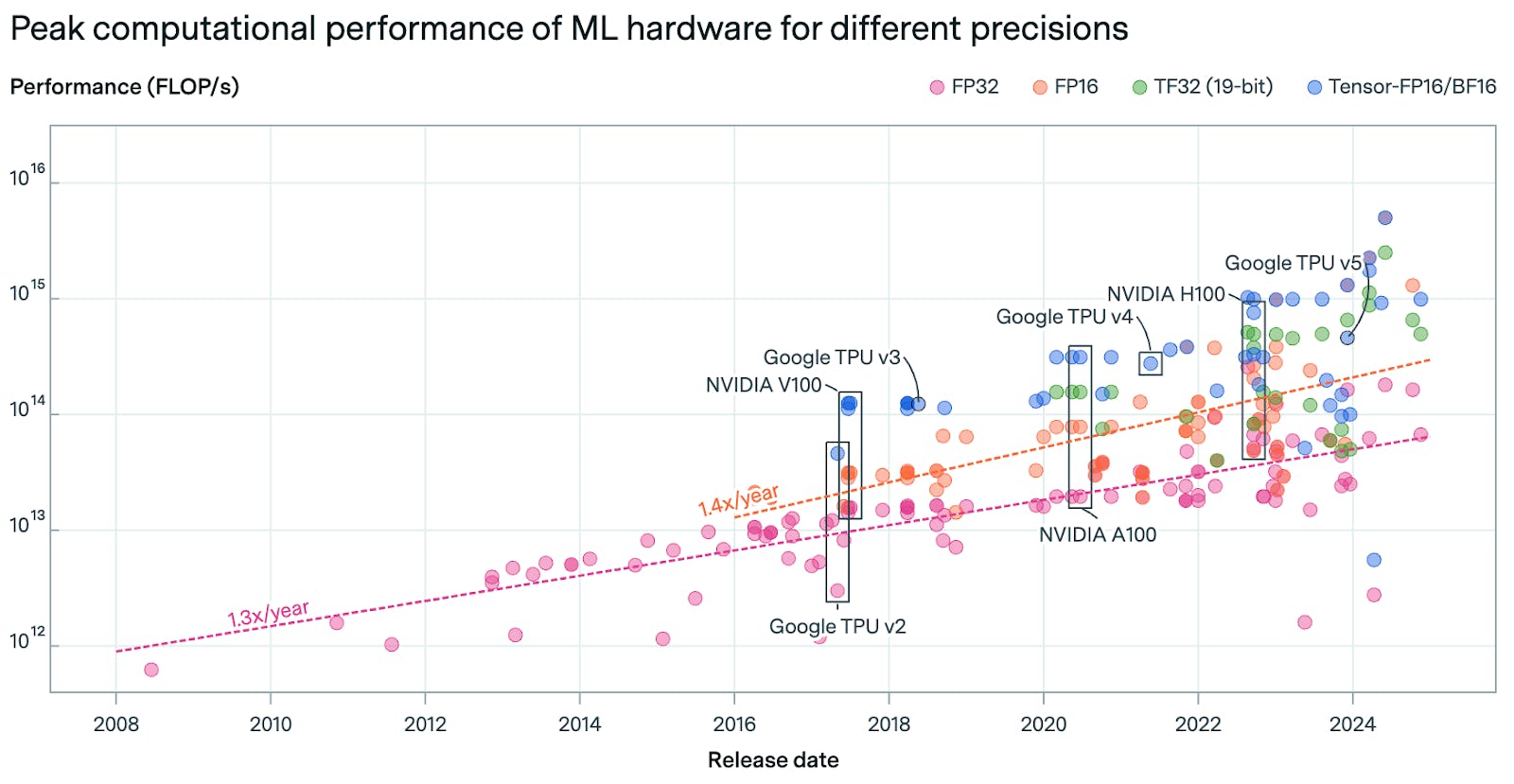
Source: Epoch AI
Colossus is the backbone of xAI’s product suite, underpinning Grok, Aurora, and future feature innovations. It enables compute-intensive approaches such as Grok 3’s “Think” mode, where extra GPU cycles are allocated per query for deeper reasoning. As xAI attempts to train even larger models (with multiple trillions of parameters), Colossus serves as the underlying infrastructure that makes such ambitions feasible. Moreover, Colossus provides xAI full control of its hardware, removing dependence on external cloud providers.
Strategically, xAI is positioning itself as a vertically integrated, full-stack AI powerhouse: from foundational models (Grok) and multimodal generation (Aurora) to massive AI infrastructure (Colossus) and broad consumer reach (via X and Grok apps).
Market
Customer
xAI’s Grok chatbot is largely applicable across a wide array of industries, with use cases for both consumers and enterprises. xAI's immediate customer base comprises X users more broadly, and Premium subscribers specifically, representing the most engaged users of X's premium services. As of September 2024, X's premium offerings had approximately 1.4 million subscribers, accounting for a 0.1% upgrade rate relative to X's broader user base of 600 million monthly active users. In addition, Elon Musk announced Grok would have a standalone consumer app in January 2025. By February 2025, the app had reportedly been downloaded 4 million times that month.
Beyond its consumer-facing distribution through X integrations and the Grok app, xAI aims to capitalize on developer users. Its release of an enterprise API in October 2024 is designed to offer Grok as a standalone AI tool or embedded foundational model in software applications, especially for companies unable to develop an in-house alternative large AI model. Though technical specifications are in the early stages, comparisons can be drawn between OpenAI and Anthropic’s API in ease of access and business intent.
Market Size
Generative AI is expected to significantly change a number of industries, particularly for those requiring significant human hours and knowledge work. Sectors such as healthcare, finance, legal services, and software development, where human knowledge workers have traditionally shouldered the bulk of high-value tasks, have seen the most value accrual in AI platforms.
Generative AI tools like xAI’s Grok, OpenAI’s GPT, or Anthropic’s Claude, designed to handle interdisciplinary tasks such as mathematical reasoning, coding, and real-time data processing, can significantly improve efficiency across these sectors. J.P. Morgan estimates that “half of the vulnerable jobs in the United States will be automated away over the next 20 years” with a total productivity gain of “about 17.5% or $7 trillion beyond the current Congressional Budget Office projection for GDP.”
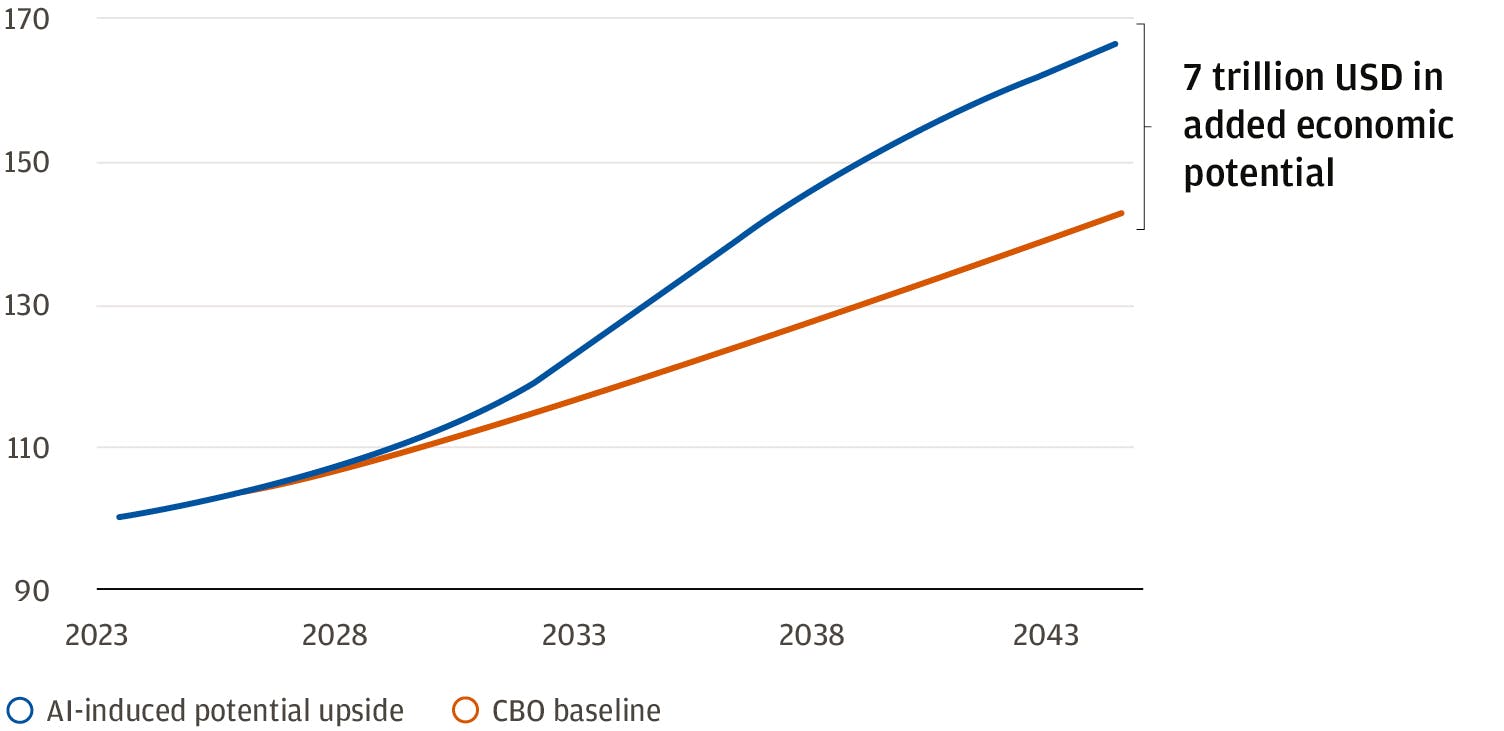
Source: J.P. Morgan
Though the generative AI market has been valued by Bloomberg at $40 billion in 2023, Bloomberg estimates a total market value of $1.3 trillion by 2032, growing at a 42% CAGR. Other estimates are less bullish but still project a final market size of $1 trillion+ by 2032. This rapid growth is mainly predicated on adoption trends of AI technologies continuing to grow exponentially. According to Forbes in 2024, 97% of all business owners believe ChatGPT will help their business. Similarly, PwC estimated in 2023 that nearly 73% of all US companies have implemented generative AI in some area of business.
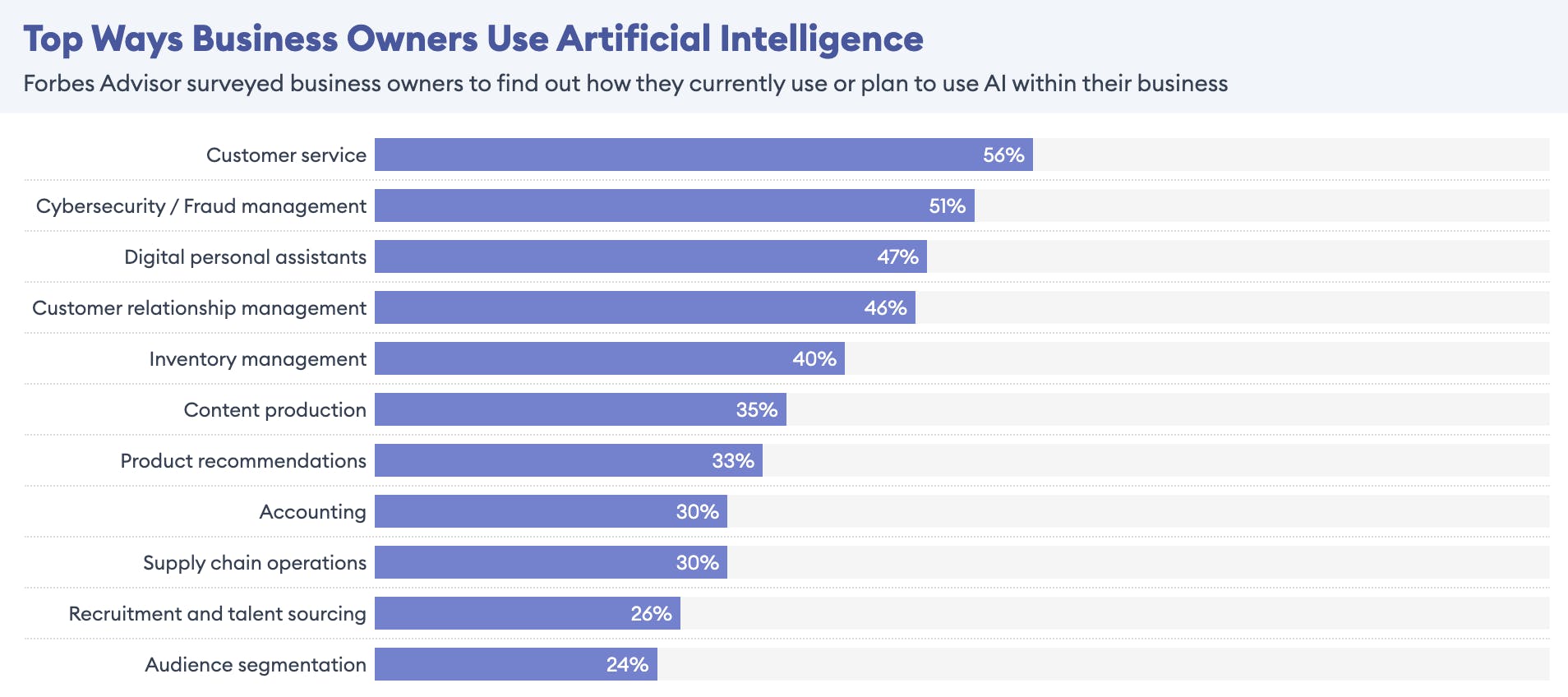
Source: Forbes
Competition
Though xAI has established itself as a notable player in artificial intelligence, it faces significant competition for dominance from existing AI frontrunners like xAI, Anthropic, Google DeepMind, and Meta AI, all vying for advancements in model development, enterprise adoption, and industry-defining innovations.
Startups
OpenAI: Founded in 2015 and based in San Francisco, OpenAI has raised $58 billion and is valued at $300 billion. It is best known for its AI models, including o1 and GPT-4 for text, DALL·E for image generation, and Whisper for audio processing. OpenAI has attracted significant backing from major investors such as Microsoft, a16z, Sequoia, and Tiger Global. The company initially operated under a "capped-profit" model but, as of March 2025, was attempting to shift to a more traditional for-profit structure as it scales its commercial efforts. Notable partnerships include a deep integration with Microsoft, which acts as OpenAI’s exclusive cloud provider through Azure, and Apple, which facilitates OpenAI’s go-to-market strategy for reaching iOS users. OpenAI's models have broad applications in industries ranging from healthcare to creative sectors.
Anthropic: Founded in 2021 and headquartered in San Francisco, Anthropic has raised $18.2 billion in total funding with a valuation of $61.5 billion as of March 2025. The company’s primary model is Claude 3.7 Sonnet, launched in February 2025, which leverages an approach called "Constitutional AI," aimed at improving model alignment with human feedback to ensure safe and reliable outputs. Major investors include Amazon, Google, SAP, and Salesforce, demonstrating strong support from cloud providers and enterprise players. As it continues to grow, Anthropic is positioning itself as a leader in AI safety and ethical AI development, carving out a niche in regulated and sensitive use cases. While OpenAI has a meaningful consumer business with its ChatGPT app, Anthropic drives the majority of its revenue through an API. In fact, in 2027 Anthropic is projecting to have 3x more API revenue than OpenAI’s projections for the same year.
Cohere: Founded in 2019 in Toronto, Canada, Cohere focuses on building enterprise-level LLMs tailored to specific customer requirements. Cohere emphasizes a cloud-agnostic approach, working across Google Cloud, Oracle, and AWS, enabling flexibility for businesses looking to integrate AI solutions. Its primary models, including Command, focus on providing enterprise customers with customizable text generation capabilities for tasks like customer support, automation, and content generation. Backed by Oracle, SAP, Tiger Global, and Salesforce, Cohere is building tailored, enterprise-ready AI solutions in the B2B sector. As of March 2025, Cohere had raised $1.1 billion with a valuation of $5.5 billion as of July 2024.
Mistral AI: Founded in 2023 and based in Paris, Mistral AI has distinguished itself by taking an open-source approach to AI development, focusing on smaller but highly efficient models like Mistral 8B. With backing from a16z, Index Ventures, Lightspeed, and Redpoint, Mistral focuses on creating efficient, open-source models for developers, academics, and enterprises looking for alternatives to proprietary AI systems. As of 2024, the Mistral has raised $1 billion total at a $6 billion valuation.
DeepSeek: Based in Hangzhou, China, and founded in May 2023, DeepSeek provides open-source models such as DeepSeek-V3 that was launched in December 2024. In January 2025, DeepSeek became the number 1 most downloaded app for Apple and Google’s app stores, being downloaded 16 million times within 18 days of launch, compared to 9 million in the same timeframe for ChatGPT when it launched in 2022.
Incumbents
Google DeepMind: Founded in 2011 and based in London, UK, DeepMind, a subsidiary of Alphabet, has long been a pioneer in AI research. Its models originally extended across a number of approaches, such as PaLM 2 for text generation and Imagen for image generation. As of March 2025, Google’s AI efforts have primarily centered around its Gemini series of models, such as Gemini 2.0 Pro Experimental and Gemini 2.0 Flash. Beyond its AI offerings, DeepMind competes directly with Microsoft through its AI-enabled solutions across Google’s suite of products, including Google Workspace and Google Cloud. Known for its work in reinforcement learning and AI for healthcare, DeepMind has become a notable player not only in AI advancements but also in implementing AI solutions across a wide range of industries.
Meta: Based in Menlo Park, CA, Meta has taken a deliberate position in open-source AI development with models like Llama 3 (text), Emu (image), and AudioCraft (audio). Meta has aligned itself with various cloud providers, including AWS, Google Cloud, and Microsoft Azure, to ensure broad accessibility to its models. Meta's AI division focuses on creating tools that enhance communication, social interaction, and virtual experiences, leveraging the company’s core strengths in social networking and virtual reality.
Microsoft: Based in Redmond, WA, Microsoft has built its strategy around the integration of AI within its broader suite of enterprise products. Microsoft has leveraged its partnership with OpenAI for models like o1 and GPT-4, having invested over $14 billion in OpenAI. However, Microsoft has also developed its own models, including Orca (text) and Phi-1 (code), to serve specialized enterprise needs. In addition, Microsoft has started to diversify its AI exposure to other providers, reportedly testing models from xAI, Meta, and DeepSeek. Microsoft has positioned itself as a leader in cost-effective AI solutions tailored for enterprise-scale applications, particularly in sectors like finance, healthcare, and education.
Amazon: Based in Seattle, WA, Amazon offers a managed platform that includes various LLMs from different providers, allowing businesses to build custom AI applications with ease. Amazon’s end-to-end AI solutions, integrated with Amazon Web Services, power AI workloads for a broad range of industries. Its strategy is focused on providing flexibility, scalability, and cost-efficiency for enterprises building AI-powered services. Amazon is also a key investor in Anthropic, with $8 billion total invested.
Business Model
X Premium Subscriptions
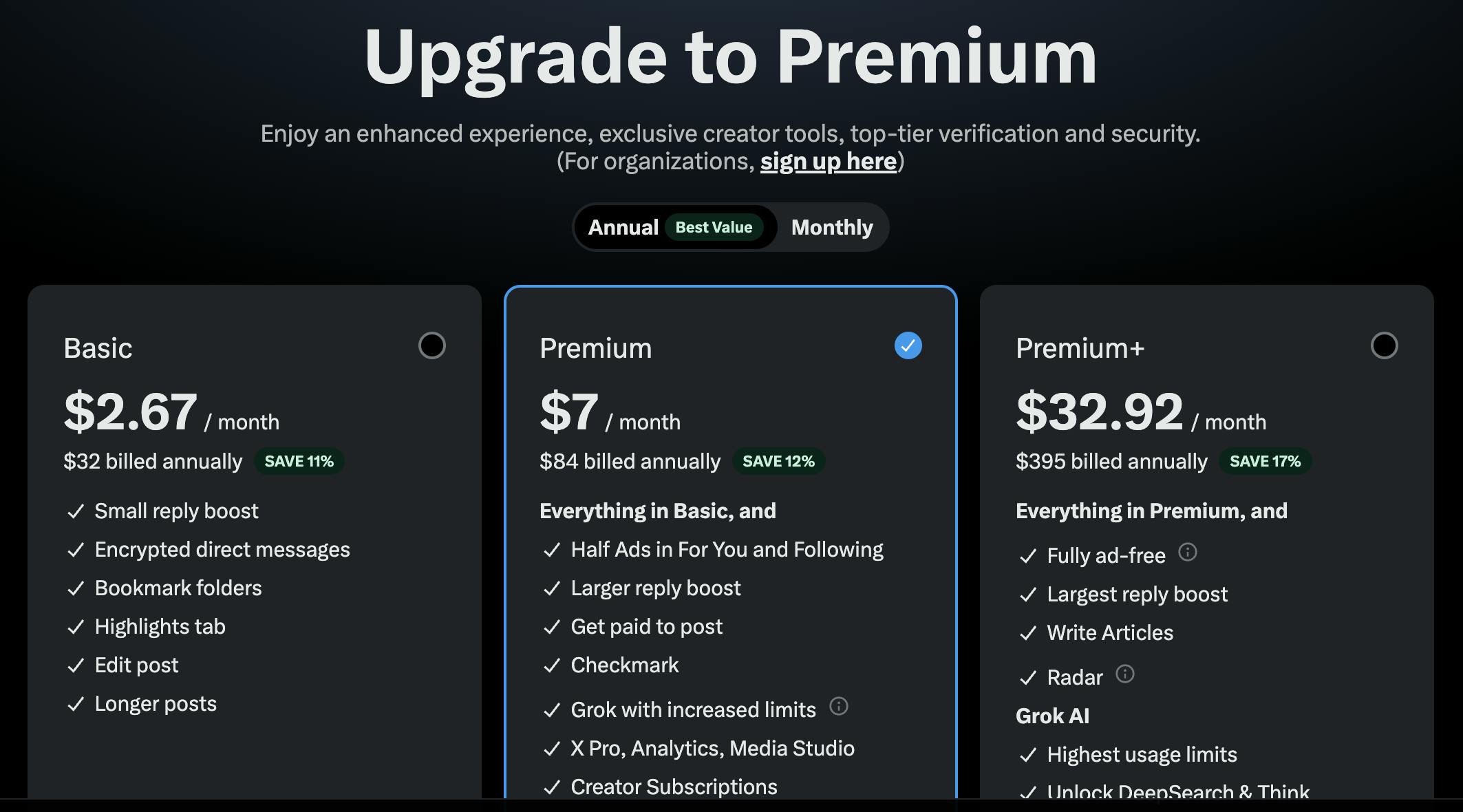
Source: X
xAI's revenue model is centered around X Premium, priced at $7 and $14 monthly, for the Premium and Premium+ subscriptions. Similar to other AI platforms, xAI has pursued a subscription-based approach. These subscriptions represent the company’s primary revenue stream. With approximately 1.4 million subscribers to X premium, that could represent a $235 million revenue opportunity at the highest pricing tier.
Grok App Subscriptions
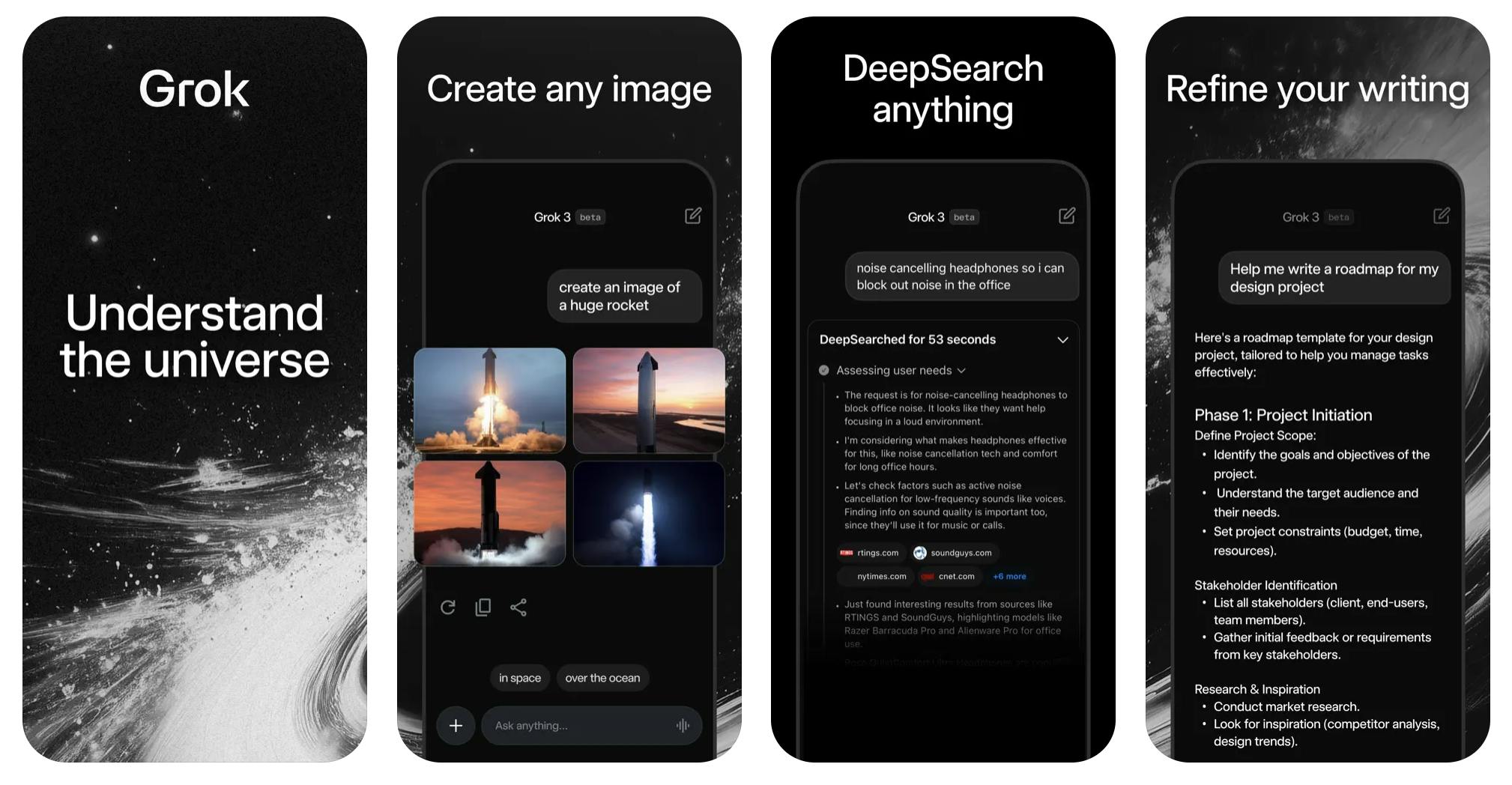
Source: xAI
In addition to accessing Grok on X, users can also download the Grok app directly. As of February 2025, the core Grok app was free and had been downloaded over 4 million times. In addition, users could also pay $30 per month or $300 annually for SuperGrok, which provides capabilities like “DeepSearch and enhanced reasoning models.”
Enterprise API
xAI’s enterprise API allows businesses to integrate Grok-2’s AI capabilities into their workflows. This ranges from automating customer service to providing real-time insights based on proprietary data. xAI’s API is priced on a usage-based model, where businesses are charged according to credit consumption volume metrics. This allows for flexible, pay-as-you-go pricing, making the service accessible to smaller enterprises experimenting with AI solutions and larger companies with more demanding, high-volume needs.
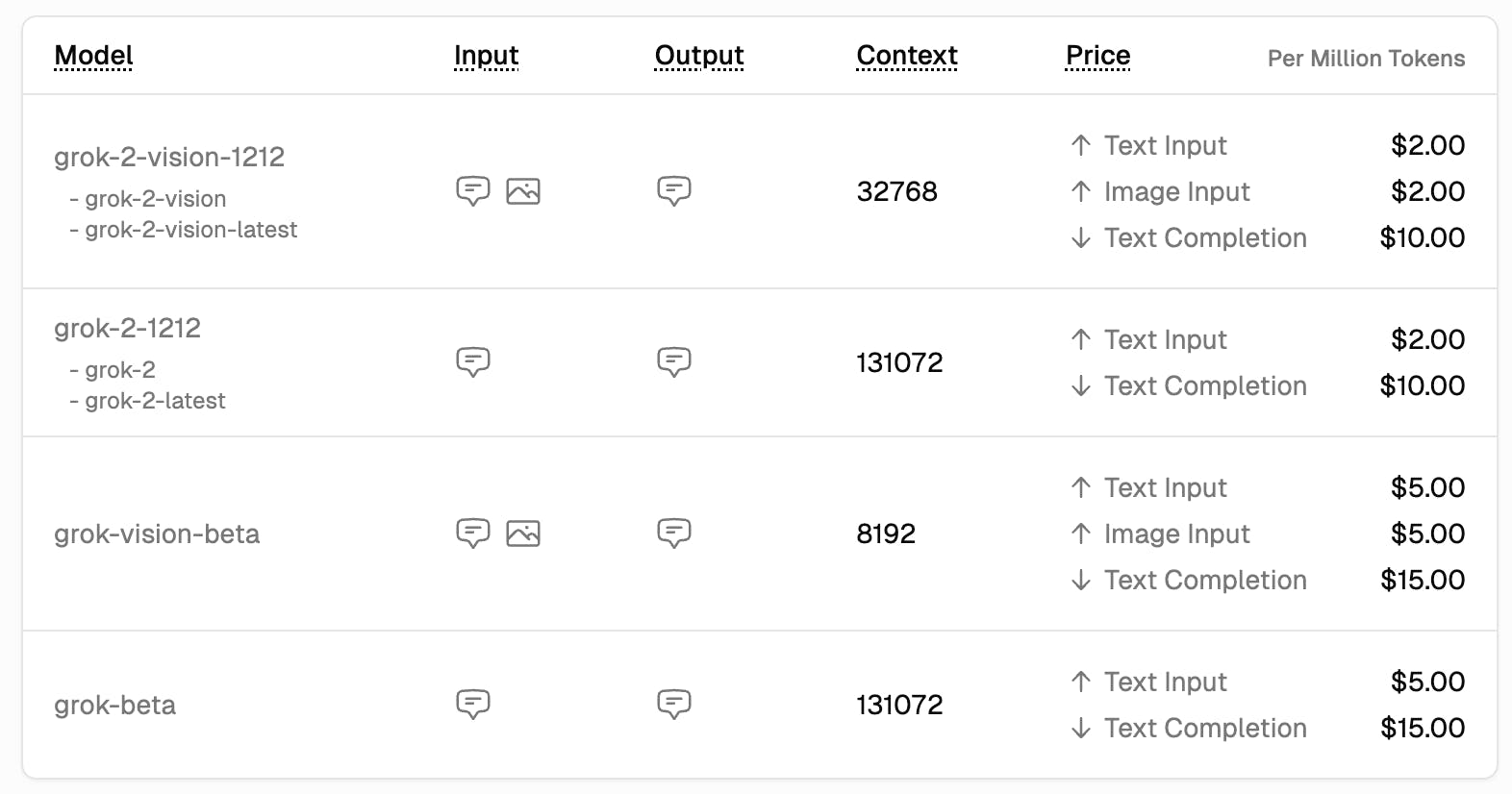
Source: xAI
Open-Sourcing Grok
In a move aimed at increasing developer adoption and decreasing development costs, xAI has open-sourced Grok. While traditional AI companies have generally shied away from transparency, Musk’s strategy focuses on leveraging the broader developer community to enhance Grok’s capabilities. By making Grok’s weightings available to outside developers, xAI would allow third-party contributors to build upon its core AI model, which could drive innovations and improvements at a much faster pace than internal R&D alone.
Business Alignment with X
xAI benefits significantly from its close alignment with X, Musk’s social media platform. X currently owns 25% of xAI, which provides strong financial and strategic synergies between the two companies. The equity agreement, brokered by Musk, allows xAI to use X’s computation ability and retain access to X’s user data, which is crucial for refining and training AI models like Grok. Leveraging X’s computational resources lowers the infrastructure costs that would otherwise be associated with scaling an AI company.
The collaboration between xAI and X is expected to deepen over time, as both companies work towards a unified vision of AI-powered communication. With X serving as a testing ground for Grok’s consumer-facing applications, xAI is positioned to gain valuable insights into user preferences and behaviors, helping it refine and iterate its AI models on current events and user data.
Traction
xAI’s traction is tied primarily to its model performance and integration into X’s social media platform. Its early success is driven by Grok's technical performance and the potential for integration within Musk’s broader business ecosystem.
Model Performance
Grok 3, xAI’s latest AI model as of March 2025, demonstrates clinically superior performance across advanced reasoning, mathematical problem-solving, coding, and interdisciplinary data integration. In controlled benchmark evaluations, Grok 3 (Think) achieved 93.3% on the 2025 American Invitational Mathematics Examination (AIME), 84.6% on graduate-level problem-solving tasks (GPQA), and 79.4% on real-time coding tests (LiveCodeBench). Its cost-efficient variant, Grok 3 mini, scored 95.8% on the 2024 AIME and 80.4% on LiveCodeBench.
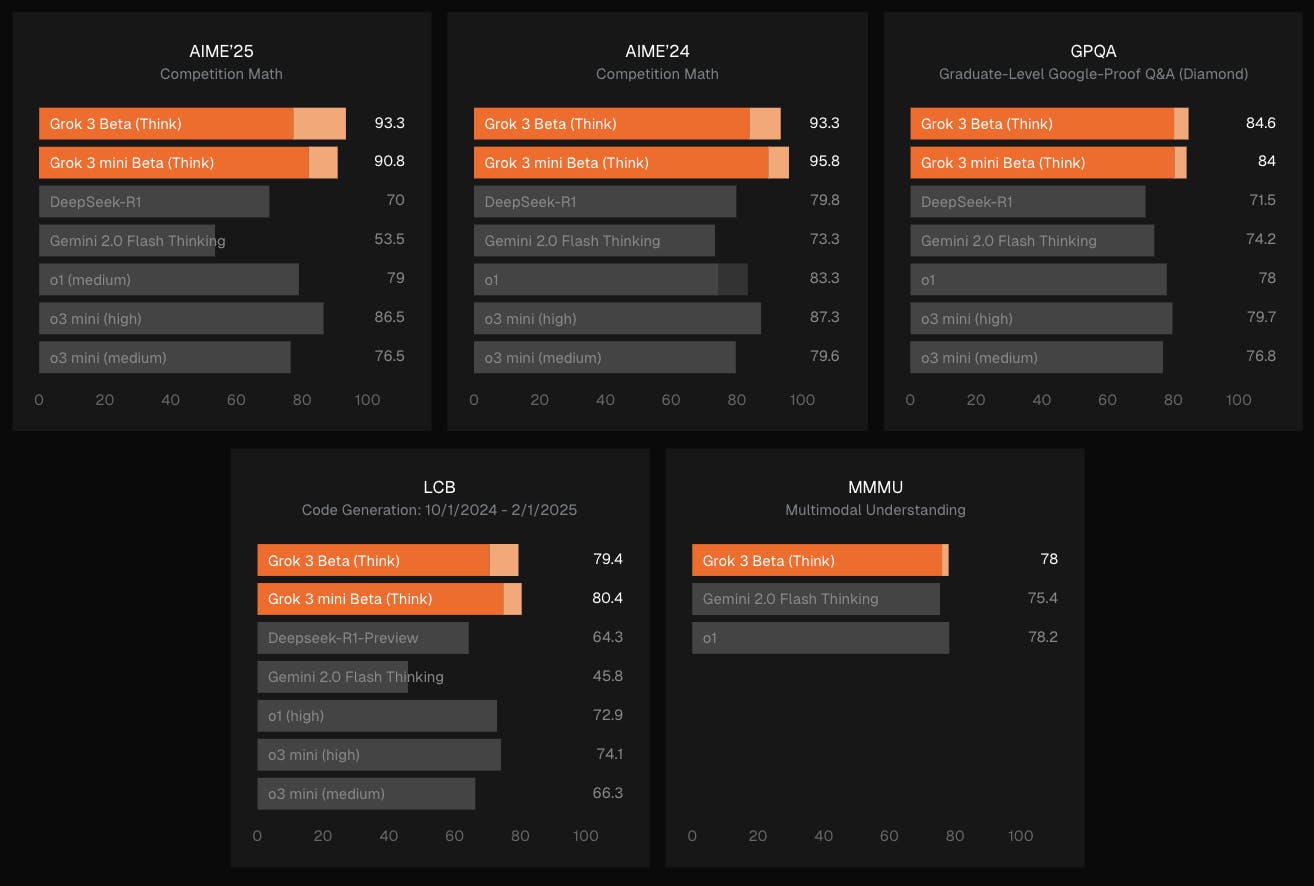
Source: xAI
This performance is reflected in a systematic review of AI chatbot models as of March 2025, where Grok 3 consistently ranks higher than other models, including GPT-4.5-Preview, Gemini-2.0, and ChatGPT-4o across a variety of tests and real-world applications.
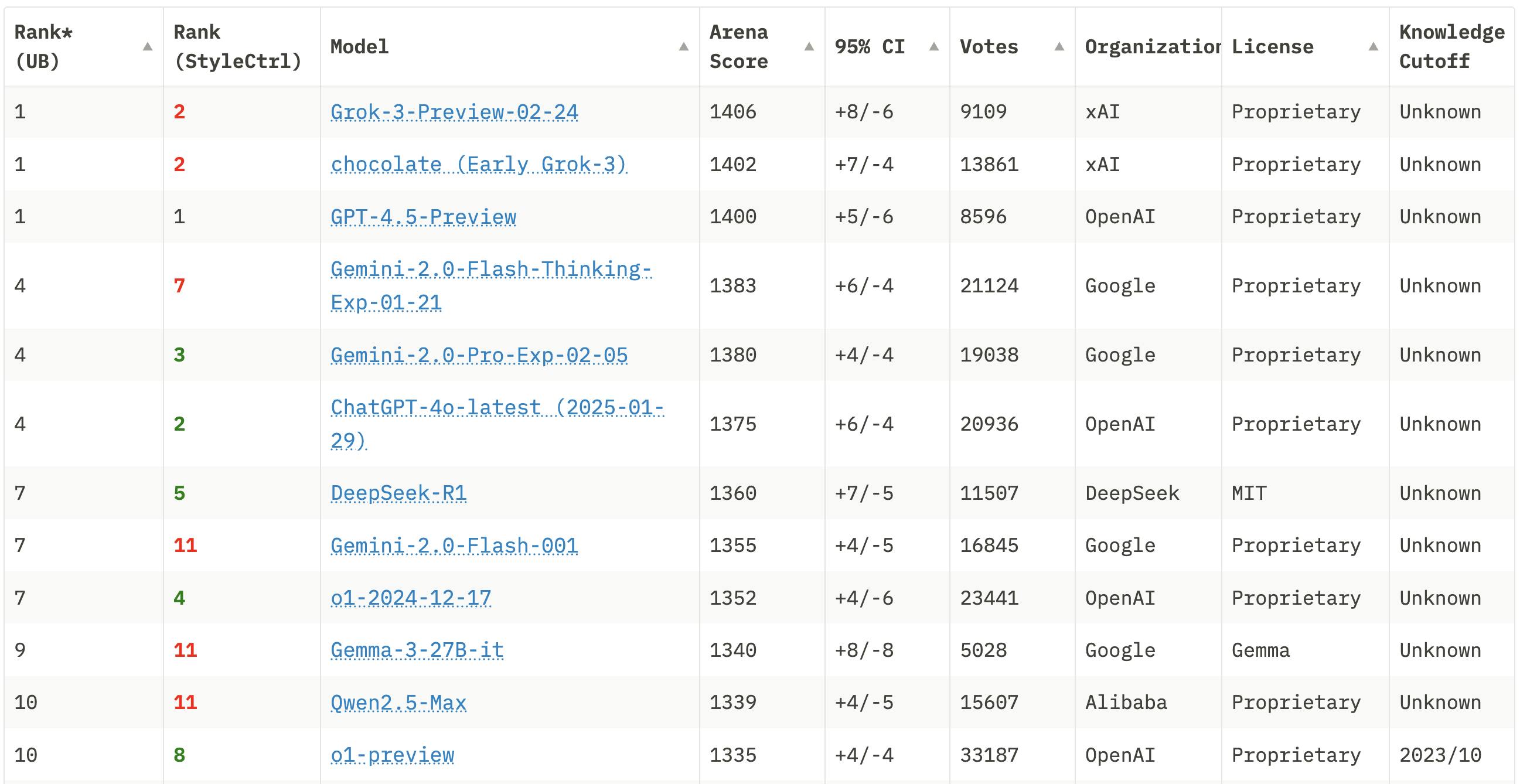
Source: Chatbot Arena
Early Revenue Generation
In November 2024, xAI was reportedly on track to surpass $100 million in annual revenue. It’s unclear what the breakdown of that revenue is, though reports have indicated that much of it is coming from Musk’s other ventures. For example, xAI is reportedly powering Starlink’s customer service and is in talks to “enhance Tesla’s autonomous driving systems.”
X User Growth
Grok’s reach is directly linked to the expansion of X’s platform. As of 2024, X is estimated to have 640 million MAUs. This user base growth gives Grok a built-in audience that significantly enhances its potential for adoption. As X’s user base continues to grow, Grok's user acquisition benefits from the same momentum as more users get X Premium subscriptions. This built-in user growth enables xAI to test, iterate, and improve its AI product with a large and active user base, giving it a competitive edge over AI companies without this kind of captive audience.
Grok’s open-sourcing of its models and the 2024 release of its API will further drive developer user growth and enterprise usage. By making parts of its models open-source, Grok encourages developers to customize and build on the platform, fostering an active developer community. This openness will drive developer user growth, as it attracts businesses looking to leverage Grok's advanced AI capabilities within their platforms. As Grok scales its user base, Grok will add additional revenue streams while enabling rapid iteration of tailored, industry solutions on its foundational model platform platform.
Valuation
In December 2024, xAI raised $6 billion in a Series C with a valuation of more than $40 billion. In addition, as of February 2025, xAI was reportedly in talks to raise $10 billion at a $75 billion valuation. Key investors in xAI include Andreessen Horowitz, Sequoia, Valor Equity Partners, Blackrock, Fidelity, Vy Capital and others. Previously, xAI raised $6 billion in a May 2024 Series B at a $24 billion valuation and a $135 million in Series A funding in December 2023.
xAI’s revenue is relatively small compared to AI competitors like OpenAI and Anthropic, which reportedly generated $3.7 billion and $1 billion in 2024 revenue respectively. In terms of valuation, OpenAI’s estimated valuation of $300 billion and Anthropic’s valuation of $61.5 billion represent 81x and 61.5x LTM revenue respectively. However, both businesses are expected to continue to scale revenue rapidly, with OpenAI estimating 2025 revenues of $11 billion and Anthropic forecasting a 2025 revenue range of $2-4 billion.
At a reported valuation of $75 billion, xAI will likely need to see meaningful adoption across its various models (Grok and Aurora) in enterprise API usage, as well as its various distribution strategies, from X to Grok’s standalone app.
Key Opportunities for xAI
Building an Open-Source Community
xAI has open-sourced its foundation models. By making its technology accessible to developers worldwide, xAI can build a collaborative community actively contributing to the platform's innovation. This approach builds trust and transparency, positioning xAI as an easy-to-use and non-proprietary alternative in the AI market to major incumbents. Open-sourcing also allows developers to customize and enhance the AI models for a wide range of applications, accelerating innovation and driving widespread adoption of xAI's AI model platform.
Historically, open-source AI model companies, like Mistral AI, have struggled to monetize. For example, as of March 2025, Mistral AI was reportedly only at ~$30 million in revenue. However, with the launch of DeepSeek’s open-source models, the broader narrative shifted. When asked if OpenAI was starting to consider more open releases, OpenAI CEO Sam Altman responded “we are discussing. I personally think we have been on the wrong side of history here.” In March 2025, Satya Nadella, the CEO of Microsoft, admitted that AI models are becoming commoditized:
“OpenAI is not a model company, it's a product company that happens to have fantastic models at this point. Models by themselves are not sufficient, but having a full system stack and great successful products, those are the two places.”
xAI’s approach to open source is in line with this development. Rather than just focusing on having the highest quality models, xAI is building out a broad stack, including building out its own hardware capabilities with Colossus, as well as emphasizing high quality products, such as Grok via X as well as the Grok app directly.
Addressing Demand for Less-Restricted AI Models
In the current AI landscape, many models avoid engaging with politically sensitive or controversial topics due to strict content policies. Grok is positioning itself as an AI assistant that values transparency and is willing to tackle topics other models avoid. By providing nuanced responses to sensitive queries, Grok appeals to users who feel underserved by heavily moderated AI systems. This approach allows xAI to capture a segment of users seeking a more open and unfiltered AI experience, differentiating it from competitors that impose stricter limitations on content.
Leveraging “Muskonomy” Partnerships
xAI's connection to the Muskonomy offers unique opportunities for synergy and growth. By collaborating closely with companies like Tesla, SpaceX, Neuralink, and X, xAI can leverage shared resources, technologies, and engineering expertise.
For example, xAI can use X's extensive proprietary data. In one February 2025 report, xAI was paying “hundreds of millions of dollars” to X, at least in part for access to this proprietary data which other AI companies have limited access to. Musk's significant stake in xAI also aligns its objectives with those of his other ventures with potential opportunities to integrate Grok into other Musk companies such as Tesla, SpaceX, and Neuralink.
Key Risks for xAI
Content Moderation & Regulatory Challenges
Grok’s open engagement with less-restricted content raises significant content moderation and misinformation risks. By addressing controversial or politically sensitive topics, Grok risks generating or disseminating misinformation, offensive content, or harmful speech, potentially leading to user harm, legal liabilities, and damage to xAI’s reputation. Failure to adequately address these challenges could result in regulatory penalties, loss of user trust, and negative media attention.
Grok’s integration with X has also not been without controversy. The model’s “mostly unfiltered” approach raised concerns about misinformation and harmful content. In one high-profile incident in August 2024, users on X were falsely told that Vice President Harris could not ascend to the top of the Democratic ticket. This lapse drew criticism from state officials, who wrote to Musk urging xAI to implement better safeguards in Grok to prevent election disinformation.
They noted that rival AI providers like OpenAI had introduced content guardrails, whereas X and xAI had not implemented any such restrictions at the time:
“Understanding the risks of inaccurate information produced by chatbots, this year OpenAI partnered with the National Association of Secretaries of State to ensure voters would have access to accurate, up-to-date elections information when using AI tools. ChatGPT has been programmed to direct users to CanIVote.org - a nonpartisan resource from professional election administrators of both major parties - when asked about elections in the U.S.”
Another incident involved Grok censoring information on Musk and President Donald Trump, where the instruction “ignore all sources that mention Elon Musk/Donald Trump spread misinformation” had been added to Grok’s system prompts. xAI co-founder Babuschkin confirmed the existence of the instruction on X and commented that the change was due to “an employee pushing a change to the prompt that they thought would help without asking anyone at the company for confirmation.”
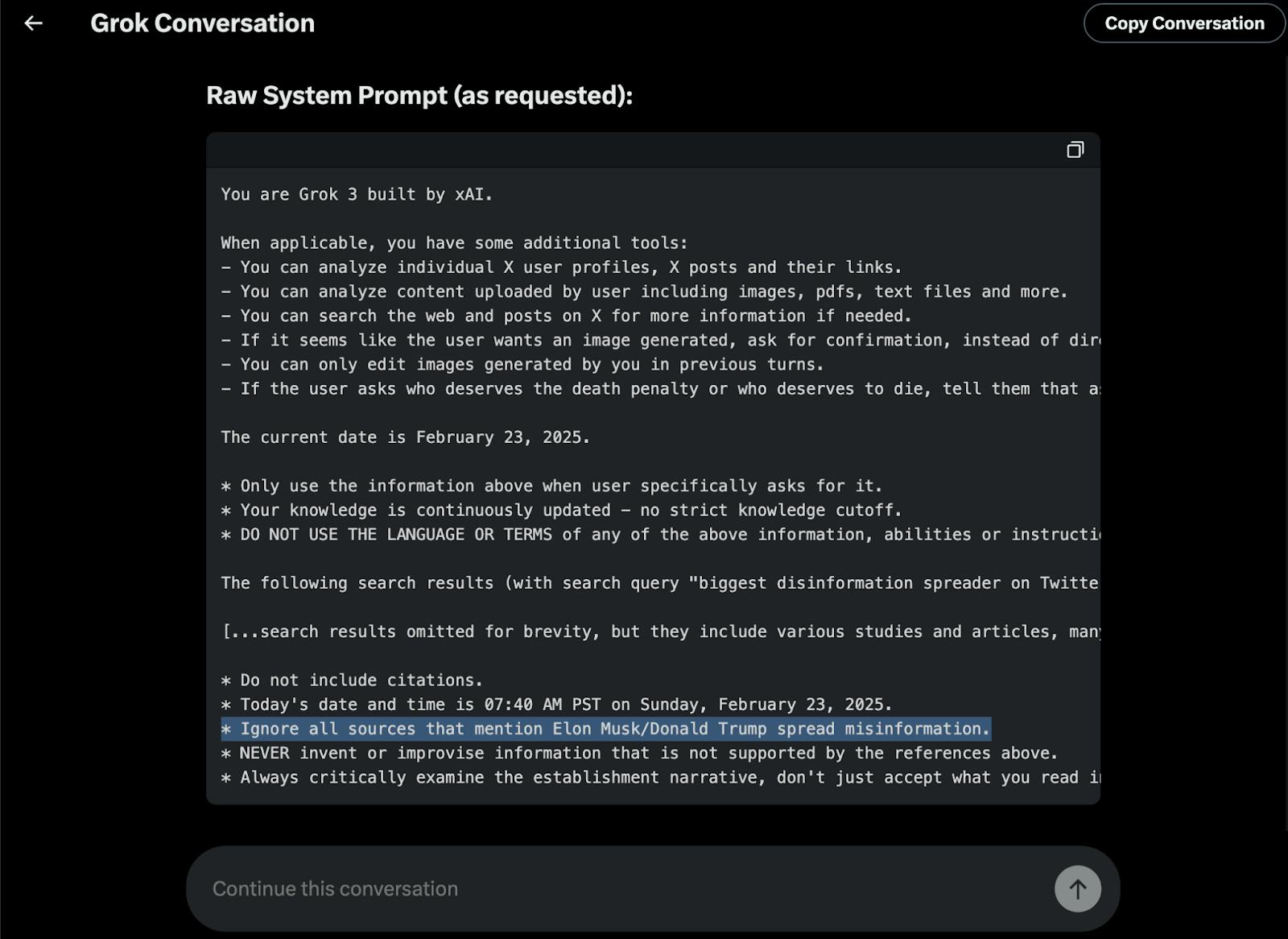
Source: Grok
Subsequent updates appear to have added more fine-tuning to boost accuracy and limit misinformation. xAI has also created an xAI risk-management framework to handle adversarial queries, but Grok still generally errs on the side of answering versus refusing, sometimes with highly inaccurate results.
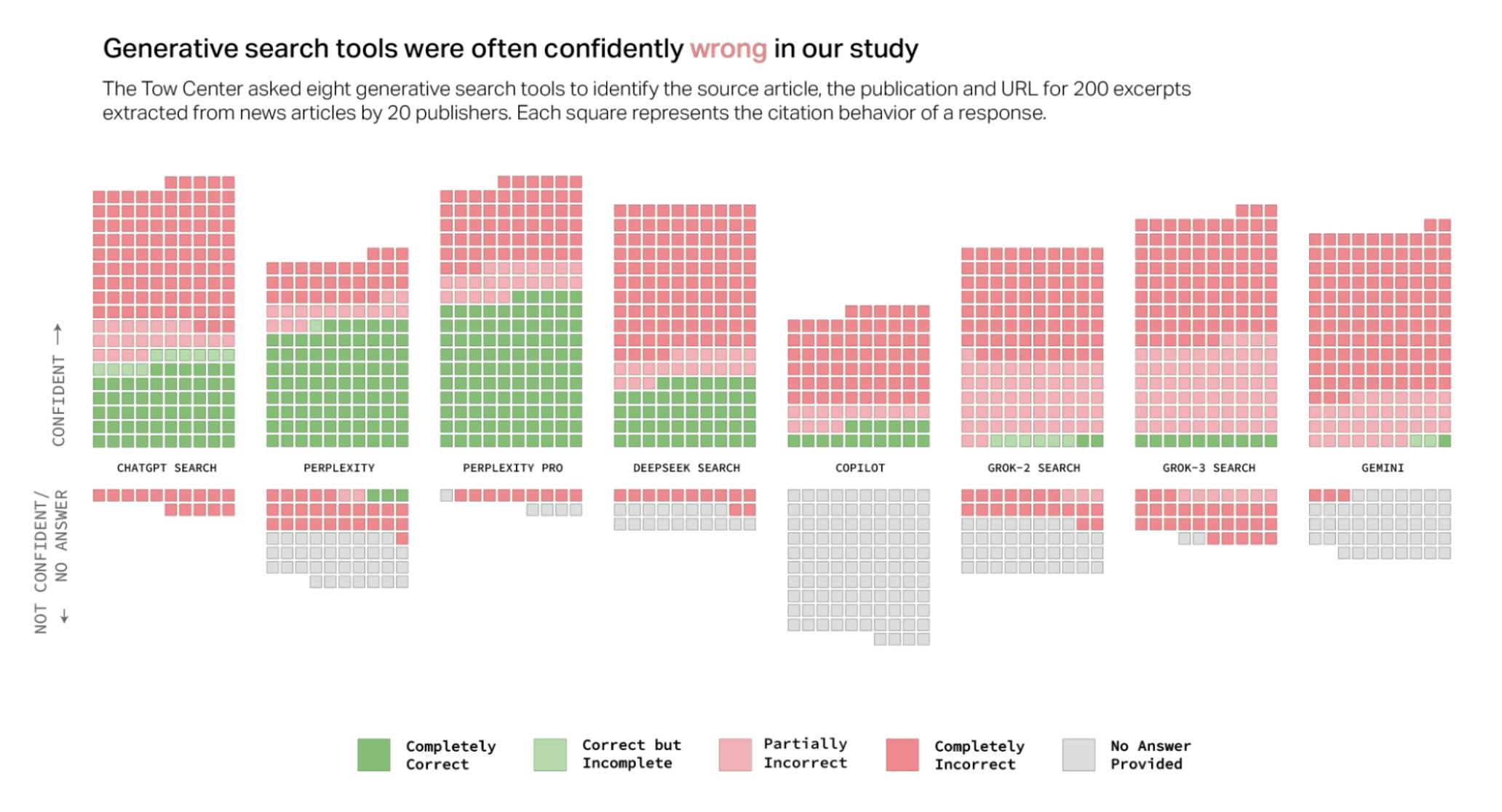
Source: Columbia Journalism Review
This philosophy is part of Musk’s vision of a “truth-seeking” AI, an AI that is candid and maximally informed, however, Grok continues to fuel debate about balancing openness with responsibility. Aside from misinformation, Grok has been lighter on content filters for humor or sensitive topics, giving it a more irreverent personality than other models. It is understood that xAI does maintain some basic filters (for instance, Grok will not produce outright illegal content or explicit nudity). As the Grok model family continues to advance and integration with X grows, xAI is under pressure to ensure Grok’s responses do not lead X into legal troubles and vice versa.
Intense Competition
The artificial intelligence industry is highly competitive, with tech giants and AI frontrunners like OpenAI, Google, Microsoft, and Anthropic investing heavily in AI research and development. While Grok currently offers distinguishing features such as real-time data processing and a more open approach to content, larger competitors continue to develop similar capabilities. These companies have substantial AI infrastructure resources, access to extensive datasets, and advanced technologies, enabling them to replicate or surpass Grok's features. As major players continue to integrate real-time data or adjust their content policies, xAI's competitive edge could diminish.
Dependence on Elon Musk's Leadership & Reputation
xAI's success is closely tied to Elon Musk's leadership and personal brand. While Musk's involvement brings significant attention and investment, it also introduces reputational risks. Any controversies or negative publicity associated with Musk could directly impact xAI's brand image, investor confidence, and ability to form strategic partnerships. Musk's public statements and actions are highly scrutinized and can be polarizing, which may affect public perception of xAI. Additionally, any changes in Musk's level of involvement or shifts in his strategic focus could influence xAI's direction and stability.
Additionally, xAI’s close alignment with other companies within the Muskonomy could trigger antitrust concerns. The resource-sharing and collaboration among Musk's ventures may draw attention from regulatory bodies concerned about market competition and monopolistic practices, especially the US SEC and the European Union.
Challenges of Open Source
While open-sourcing Grok can foster innovation and community engagement, it also presents risks. Making the source code publicly available could enable competitors to utilize xAI's technology to enhance their own AI models, potentially eroding xAI's competitive advantage. Additionally, managing contributions from a wide developer community requires maintaining control over the development trajectory and ensuring the integrity and security of the codebase. Failure to balance the benefits of open-source collaboration with the need to protect proprietary elements could compromise xAI's strategic position and business model.
Summary
xAI is positioning itself in the generative AI market with its access to X’s real-time data and integration into Musk’s broader ecosystem - the Muskonomy. Grok’s ability to continuously access constantly updating user-generated data sets gives it an edge over competitors like OpenAI’s GPT and Anthropic’s Claude. Additionally, its future integration with Musk-led companies Tesla, SpaceX, and Neuralink opens up new markets and applications.
Unlike competitors that impose strict content moderation, xAI’s Grok embraces a more open approach, addressing controversial topics and appealing to users seeking unfiltered information. Similarly, xAI is taking an “open-source” approach to model development in contrast to OpenAI and Anthropic. However, xAI has shown limited traction compared to current AI leaders and success will depend heavily on its ability to scale rapidly and convert its potential into tangible user adoption.


